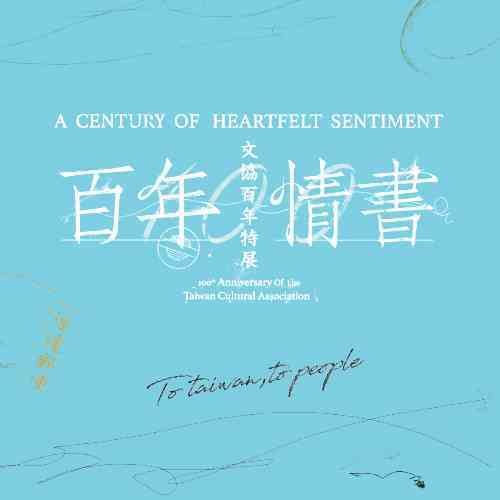Have We Found the Magic Bullet? The 'Hot-and-Cold' 1920s: High-Strung and Forlorn|Education Within Everyone's Reach! Opening a Window onto the World|Common Cause, Divergent Paths. Ideological Principles Split TCA in Two
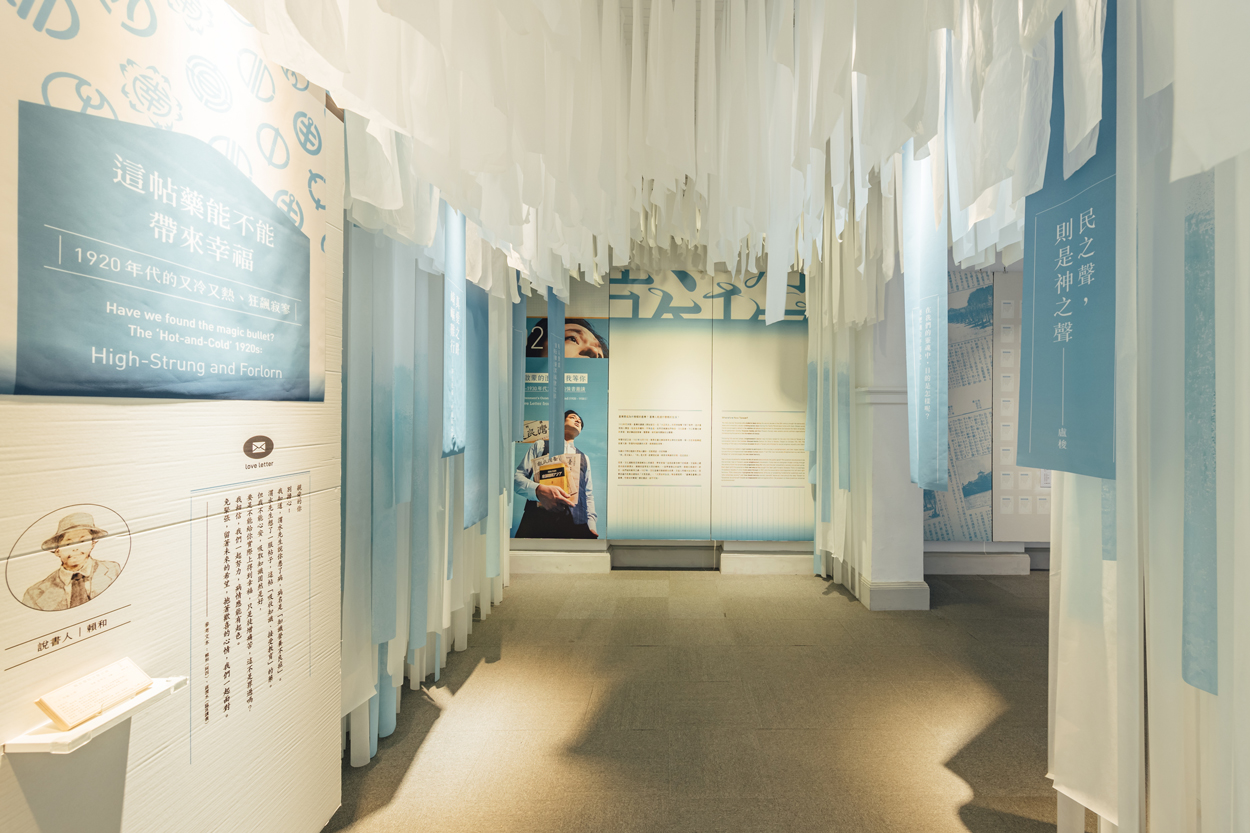
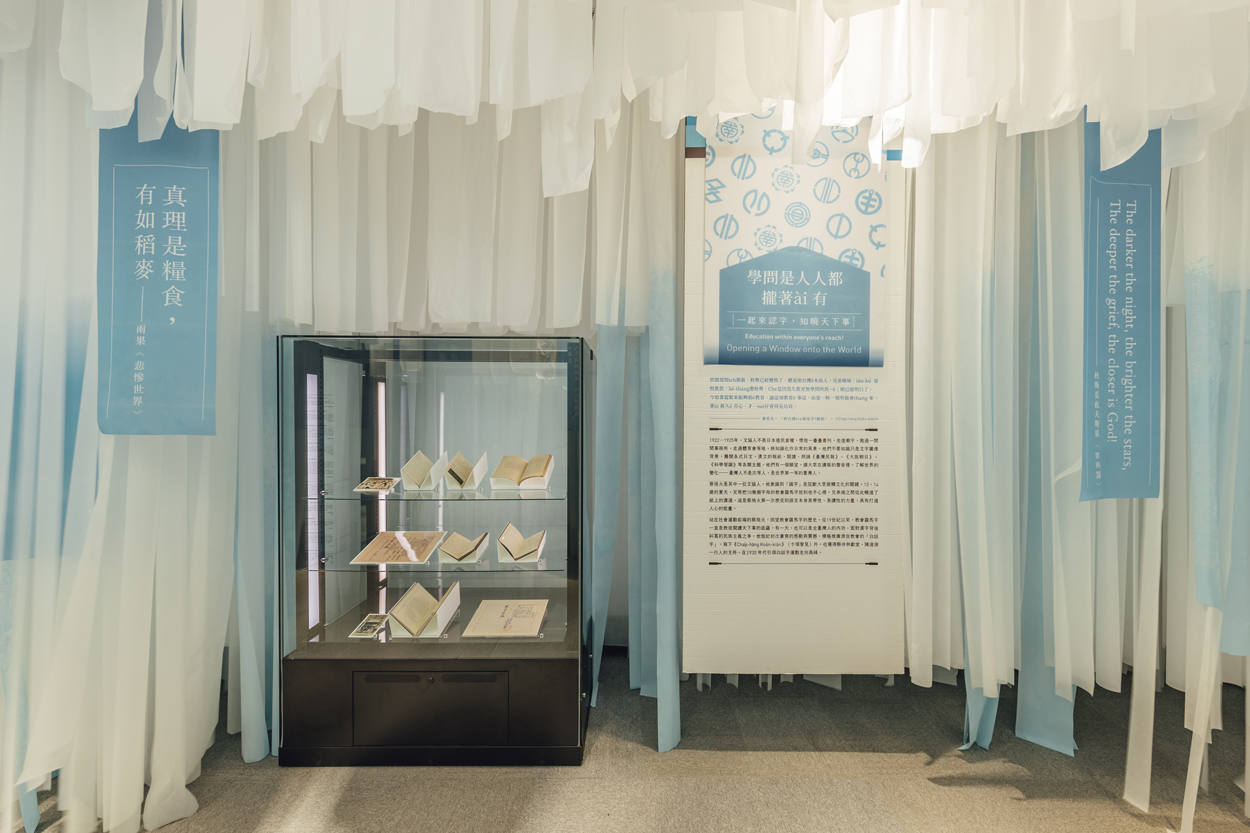
Wherefore Now Taiwan?
The many learned Taiwanese who studied in Japan during the second decade of the 20th century brought the democratic ideas and humanistic values rumbling across Japan during the Taishō Period back home with them. Global social trends encouraged a belief in the abilities of cultural enlightenment to strengthen and elevate the fabric of society. The Enlightenment Society, Response Society, and New People's Society were several activist political organizations formed during this period to test the waters of change.
Following this earliest phase, enlightenment's banner was formally raised for the very first time on Taiwan in a convocation held at the Catholic Blessed Imelda School for Girls in Taihoku (Taipei) on October 17th, 1921. The founding of TCA was a momentous occasion for all in Taiwan who thirsted for social progress, equality, and liberty.
TCA's intellectual leaders urged society to participate in this journey to enlightenment, and their hopes reached out as a flurry of impassioned 'love letters' to their island. "I" am TCA; "you" are society. Enlightenment is a red lifeline bringing "us", once estranged, into ever closer harmony.
Can cultural movements resolve the ills of society and promote the public good? This question would prove to be the Achilles' heel of Taiwan's social enlightenment movement. It also was an evergreen thread running through the works of both the dynamically progressive Jiang Wei-shui and the ever-empathetic, socially concerned Lai He. Each dealt with this question in their own way as they sought the 'best' path forward. However, TCA's increasingly threadbare façade of unity finally wore through in 1927, and the association disintegrated into left and right factions. TCA's dissolution highlighted the fundamental difficulty of answering fundamental questions such as 'who comprises society?' and 'how should everyday society operate?' Above all, how should the ideal 'Taiwan for Taiwanese' be achieved? Despite an impassioned and variegated effort, the answers to these questions remained as elusive as ever.
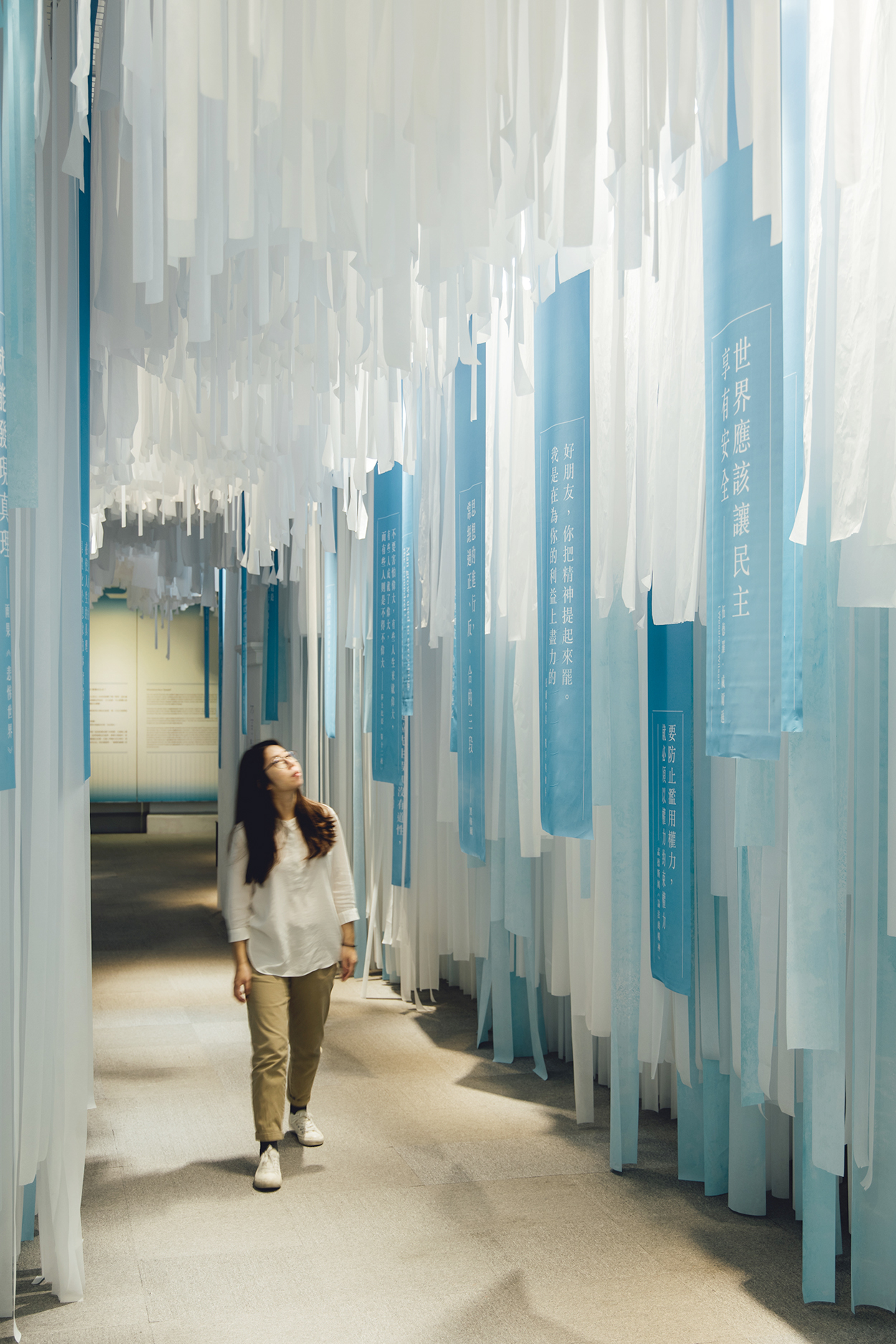
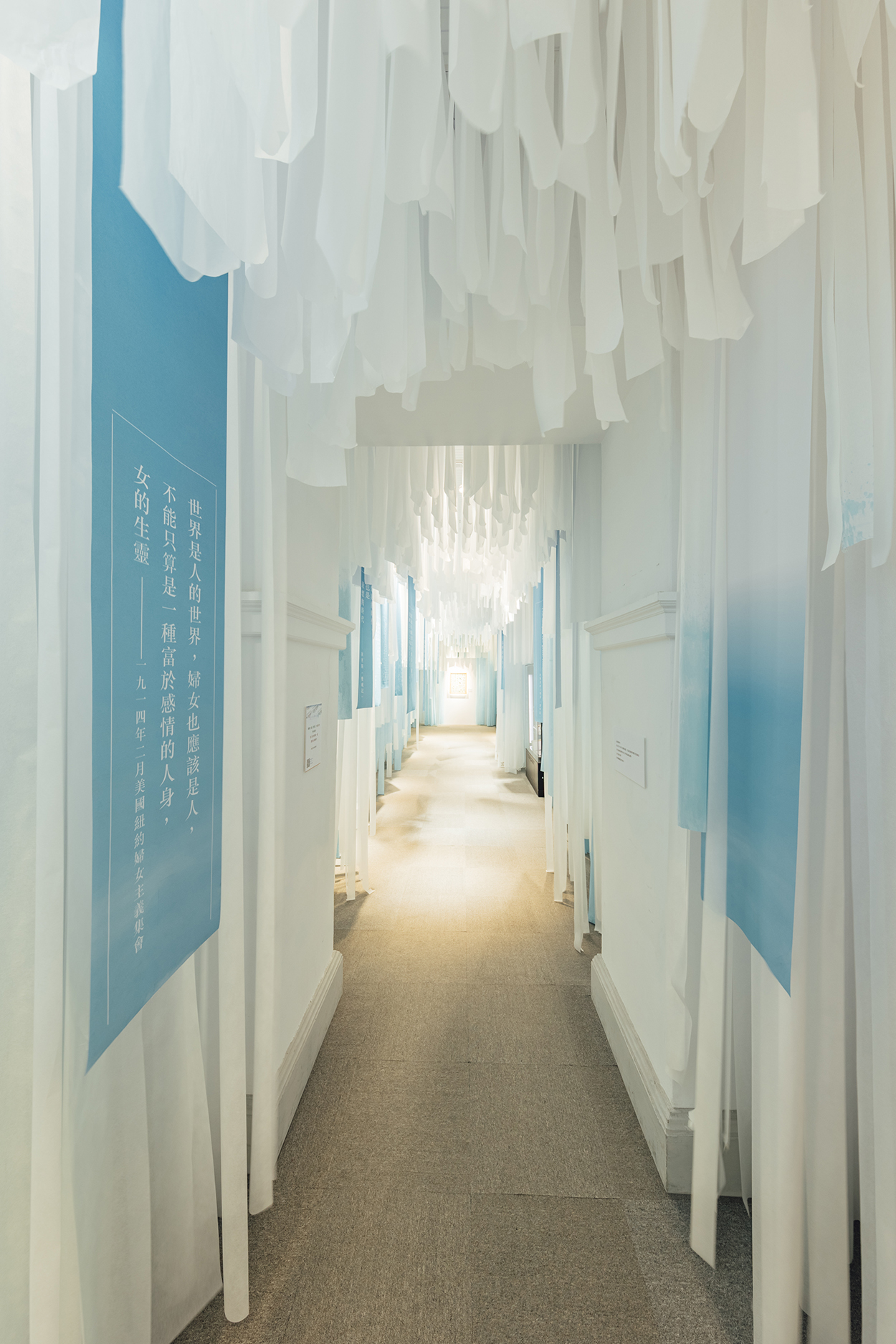
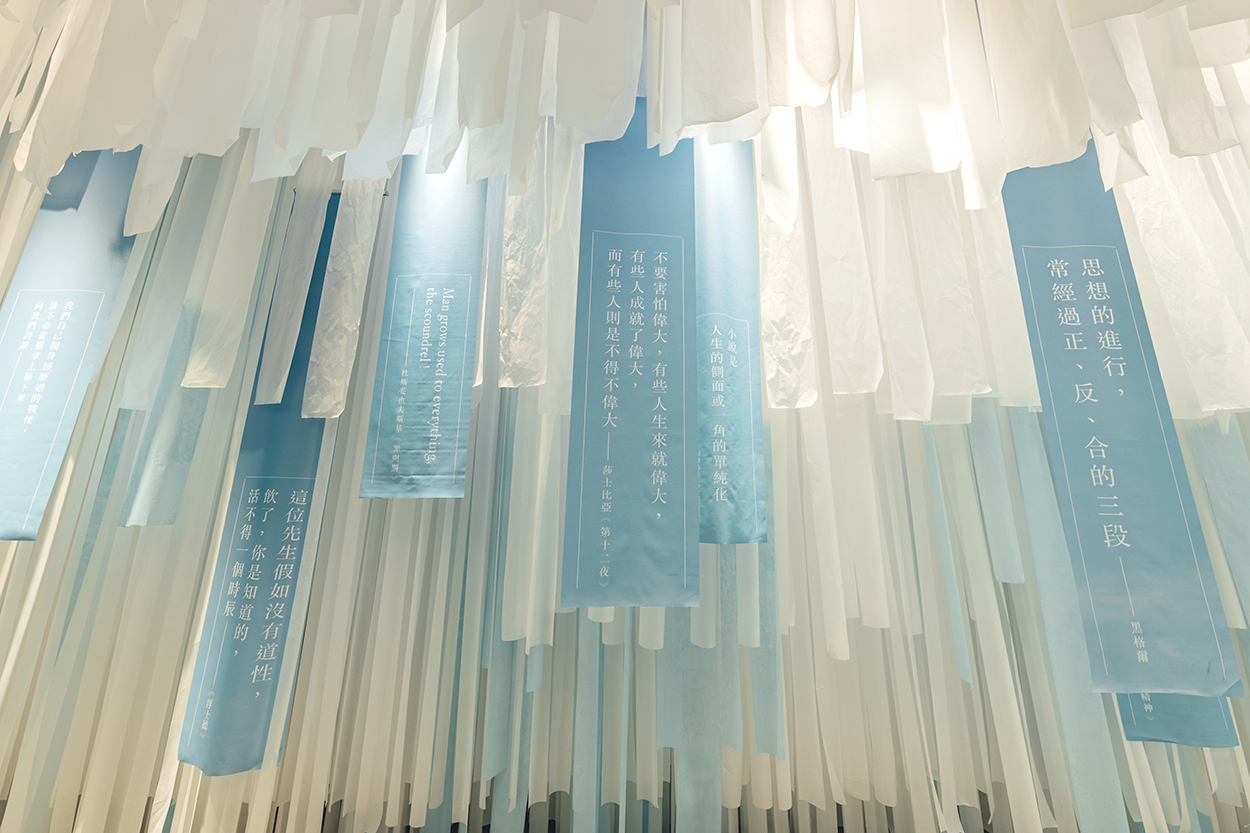
These excerpts in the hallway come from the magazine TAIWAN, which was published in the 1920s, and from books belonging to Taiwanese Cultural Association members Loa Ho and Liu Qing-yun. The literary and intellectual reading materials that nurtured Taiwanese young people a hundred years ago. We, after a hundred years, are still reading these classics.

✒ Have We Found the Magic Bullet? The 'Hot-and-Cold' 1920s: High-Strung and Forlorn
"Alas! Social progress is actually not the same as people's happiness. These two ideals cannot be compared at all."
Before the establishment of the Taiwanese Cultural Association, the colonial Government-General of Taiwan had begun offering modern education through the newly established public school system. Loa Ho, who started learning Chinese from a young age, received a modern education and became a doctor. As a teen, he was enormously influenced by the 1912 Bamboo Hill Incident, a rural uprising against the colonial government's ban on farmers using lowland forest areas in southern Taiwan. In 1921, he joined the Cultural Association and was elected as Director. During the time, he constantly questioned the nature of education. He understood that "Taiwanese culture must be refined so that locals could lead a dignified life." Along with his other friends, he wrote novels, poems, and plays, and raised funds to found newspapers, show movies in public, and hold speeches and seminars. However, the cultural initiatives did not resolve people's problems. He could not help but question the point of enlightenment.
Oscillating between ideals and reality, he was mired in complicated emotions. Yet, Loa Ho did not give up in despair. He spoke his heart through the character of A-Si in his writings. "His heart was filled with flame-like compassion. He wanted to do his best to say what they wanted to hear, enabling everyone to get some comfort and have hope for the future." The future was right under his feet, and he must not stop.
____.¸¸.¤·.¸¸.·´¯`·.¸¸.¤ ღ ¤·.¸¸.·´¯`·.¸¸.¤·.¸¸.____
Dear,
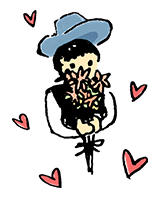
Don't worry! I know, Wei-shui said you've been sick with a syndrome called "knowledge insufficiency syndrome." Wei-Shui thought up a cure that requires "absorbing knowledge and receiving education." Yet, I still cannot get peace of mind. Absorbing knowledge is a good thing, but isn't it a sin if it gives you pain instead of happiness? I believe if we work together, your sickness will get better. Don't worry. Hold on to your hope for the future and stay positive. Let's face this together.
References: Loa Ho's "Ah-Si," Chiang Wei-shui's "Clinical Notes."
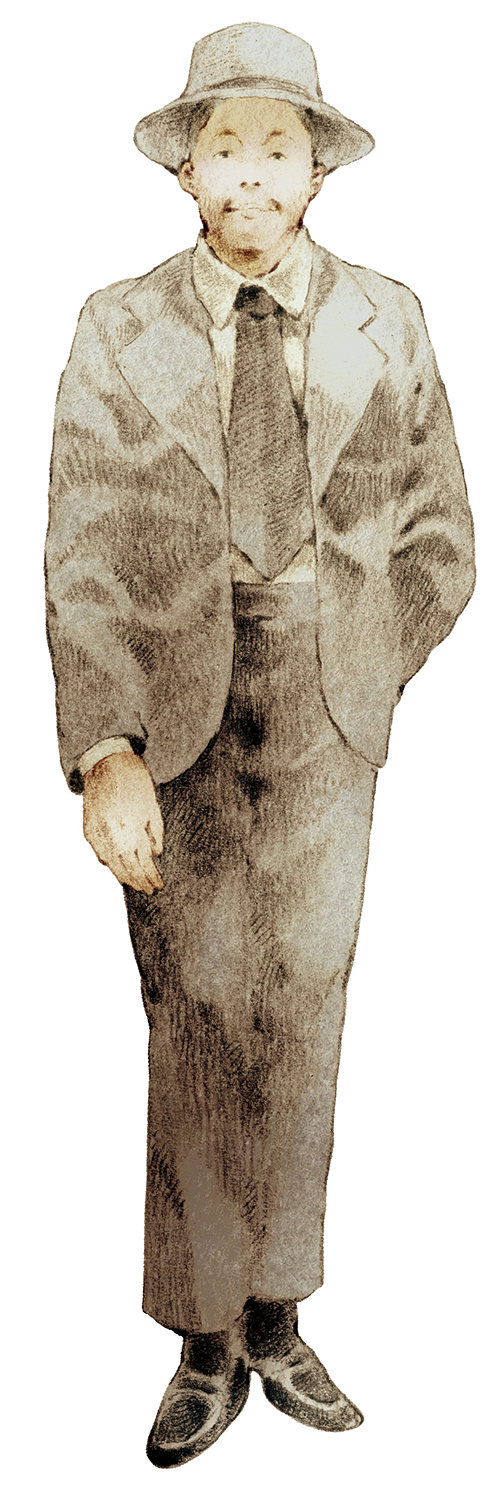
📪️ Loa Ho(1894—1943), born in Changhua City. He wrote under different pen names, including Lan Yun and Fu San. He graduated from the Government-General of Taiwan Medical School. He once worked at Bo Ai Hospital in Xiamen before he founded Loa Ho Hospital.
In 1921, he joined the Taiwan Cultural Association. In 1926, he edited the literature column of THE TAIWAN MINPAO, encouraging young writers to submit their works. His works include mainly poems, works of prose, and novels, which reflect contemporary intellectuals' lamentation for Taiwan's status as a colony and their ideals that were in conflict with society. His writings are mixed with modern literal Taiwanese, earning him the honorific title of "Father of Taiwan New Literature."
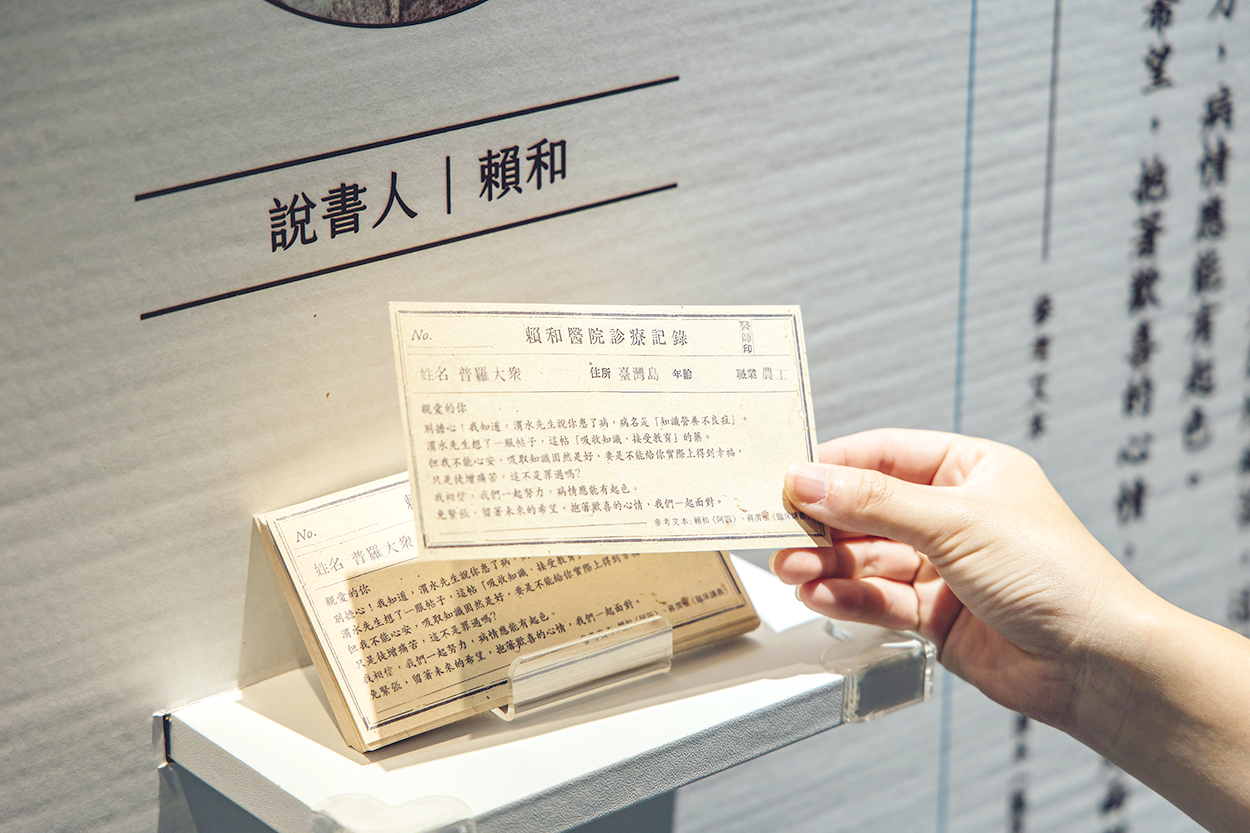
It was the beginning of the Zhulin Incident (resistance against Japan), tens of thousands of people were involved and their livelihoods were destroyed. They were in the most dire straits and received no help. They were sad, afraid, and indignant, struggling to save themselves. However, they had still a bit of faith in the cultural association. They understood that the association aimed to help people seek happiness. Therefore, they had great expectations, hoping to do something for it so that their lives would no longer be threatened and they could get some sense of security.
—Loa Ho, "Ah-Si"
➹ Cultural Association Q&A
Q: The Zhulin Incident mentioned in Loa Ho's novel "Ah-Si" was the first farmers' resistance movement during the Japanese Colonial Period. Do you know its background story?
A: The Zhulin Incident, aka Lin Qi Pu Incident: In 1908, the Government-General of Taiwan confiscated the 'Zhulin' bamboo forest area around Kagi Cho, Nanto Cho, and Toroku Cho, forcing its residents to give up their land with little compensation.
The Zhulin area was later on taken over by Mitsubishi Paper Mills, causing local dissatisfaction. Residents filed a petition to the local government but were arrested instead. The Government-General of Taiwan used a carrot-and-stick approach and released part of the land in the name of state forest custody. Residents could harvest bamboo shoots for their own use, although they were frequently harassed by Mitsubishi Paper Mills. With strong suppression from the colonial government, farmers and land owners who had lost their livelihood became increasingly indignant.
On March 23rd, 1912, Liu Qian and Lin Qi-zhen, who lived in Nanto Cho and were bullied by the Japanese police, initiated a farmers' rebellion and attacked Dinglin (now Dinglin Village, Zhushan Township) police station, killing three Taiwanese police officers. Afterwards, Lin Qi Pu Sub Cho arrested Liu Qian and others, whom were then sentenced to death. This was the first instance of organized farmers' resistance during the Japanese Colonial Period.
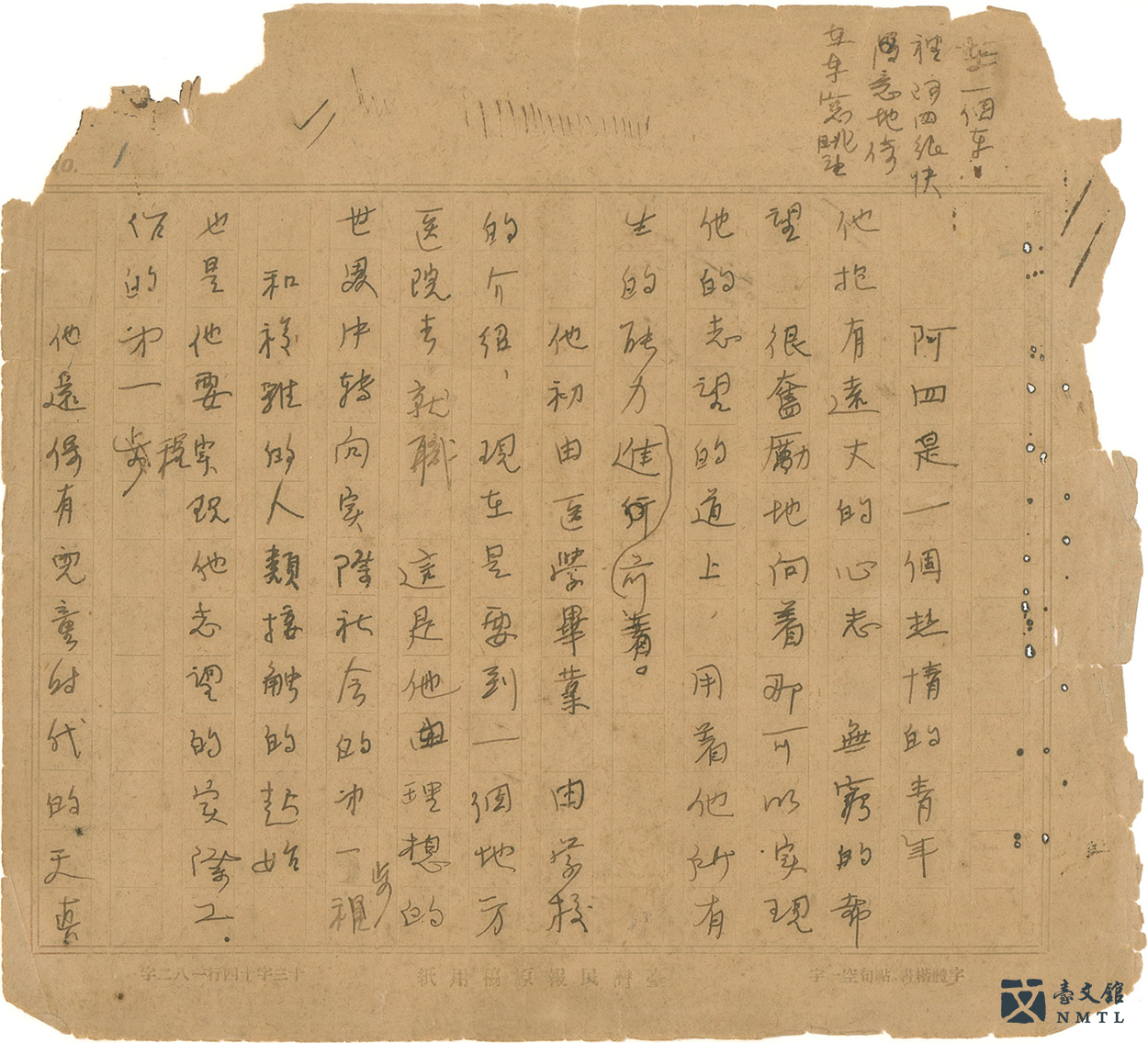
ღ Loa Ho "Ah-Si"| In 1925, Loa Ho wrote the autobiographical novel "Ah-Si." The protagonist is initially filled with enthusiasm. He works at a hospital and sees the unequal treatment of Taiwanese people. He then returns to his hometown to open a clinic, joins the cultural association, and gives public speeches. After the 1923 the Zhulin incident, people who come to the speeches look forward to seeing the cultural association bring them happiness. Yet, it is unknown if the association can really bring people happiness. Loa Ho transforms himself into Ah-Si, expressing his unwillingness to give up despite his frustration.(Provided by Loa Ho Education Foundation)
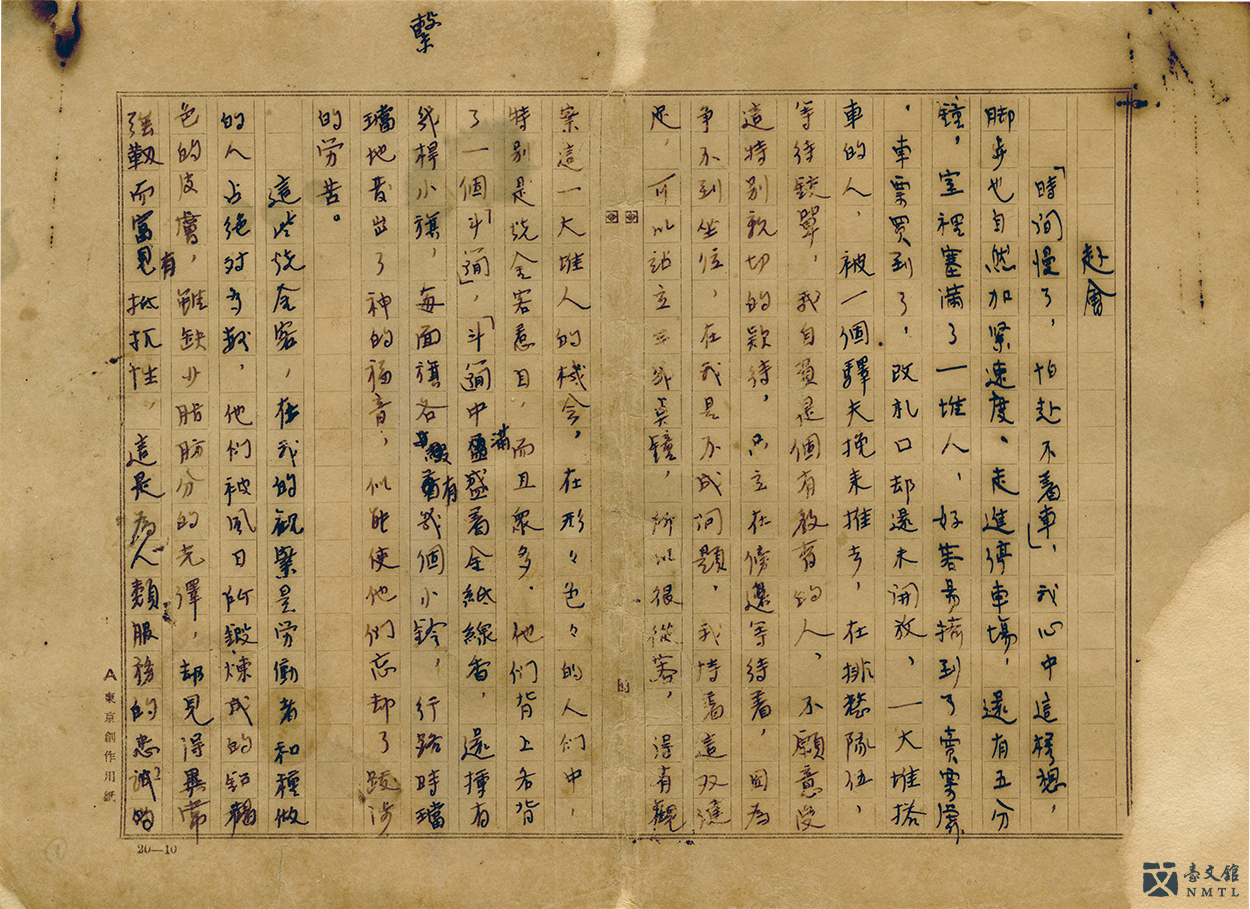
ღ Loa Ho "Attendance"| The "I" in the novel is a member of the cultural association. On the way to a meeting, he meets a group of worshippers going on a pilgrimage. They are all working class people. Yet, despite suffering from life's pain, they look to gain happiness by supplicating themselves to ignorant statues. In several meetings of the cultural association, people propose that this sort of superstition should be abolished, but nothing works. However, if it is truly abolished, where should people find their peace? "I" is also like those worshippers, attending ineffective meetings held by the association. Considering the suffering in life, exactly what has changed through the revolutionary claims made by the association?(Provided by Loa Ho Education Foundation)
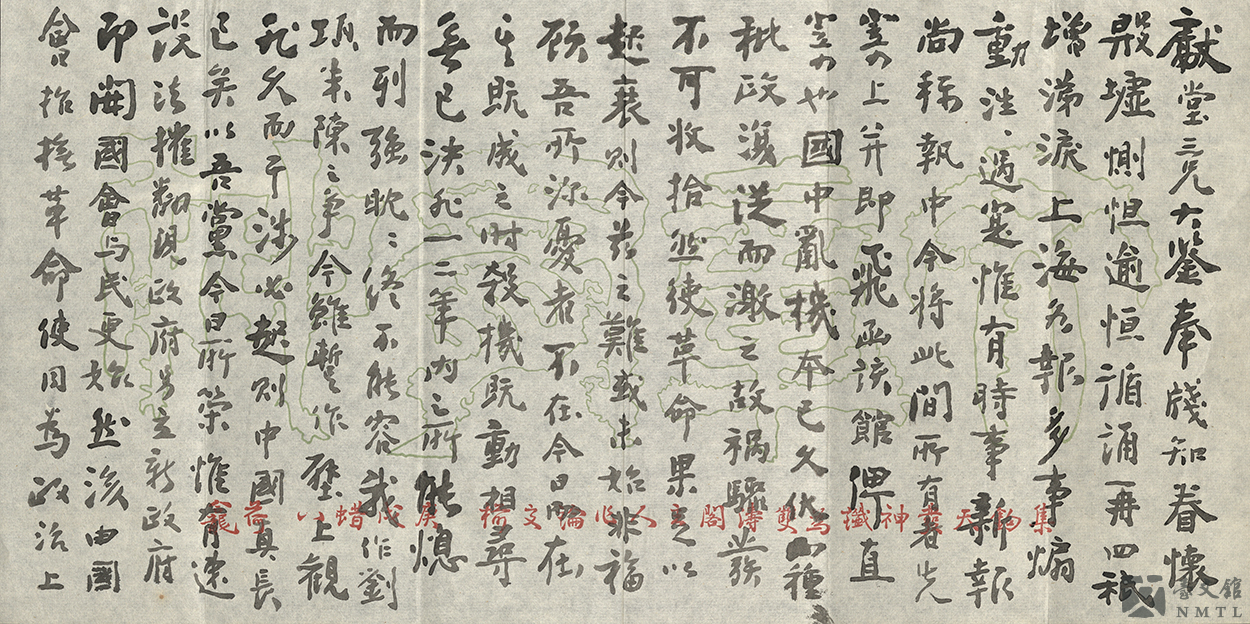
ღ Letter to Lin Hsien-tang from Liang Qi-chao| In 1907, Lin Hsien-tang went on a trip through Japan and became acquainted with Liang Qi-chao. The two began their discussions on Taiwan's fate. In March 1911, Liang was invited to Taiwan by Lin for a one-month visit. After leaving Taiwan, Liang still frequently wrote to Lin. This letter, citing the story of Yan Zhenqing, asks Lin "to shamelessly lend a large sum of money" to help Liang's efforts to promote the creation of a constitutional monarchy in China.(Donated by Huang De-shi)

ღ Letter to Liang Qi-chao from Lin Hsien-tang (Draft)| On November 8th, 1911, the draft letter to Liang Qi-chao from Lin Hsien-tang mentioned the unrest in China and the conflict between the Qing government and the new republican government. Trapped by the Western Great Powers, China was in enormous danger. Lin Hsien-tang believed unrest to be unavoidable and anticipated that Liang would have a solution. Lin, being in Taiwan, could only provide financial support. In addition, Lin did not forget his promise to send nice tea to Liang. However, as the timing was not right, he said he would send the tea at a later time. This letter shows Lin's complete support for Liang.(Donated by Huang De-shi)
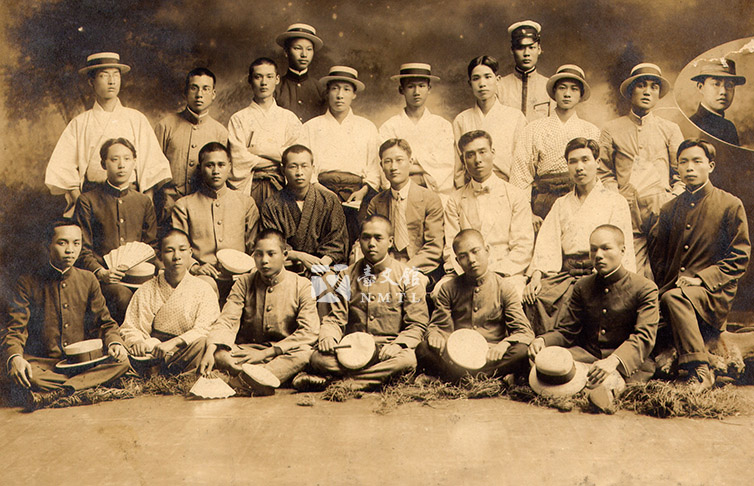
ღ Photo of Young Men Studying in Japan in the 1910s| In the 1910s, Tsai Pei-huo (second from the left, second row), Lin Mo-sei (third from the left, second row), Liu Qing-yun (first from the left, third row) and others had this picture taken together.(Provided by Liu Ke-quan)
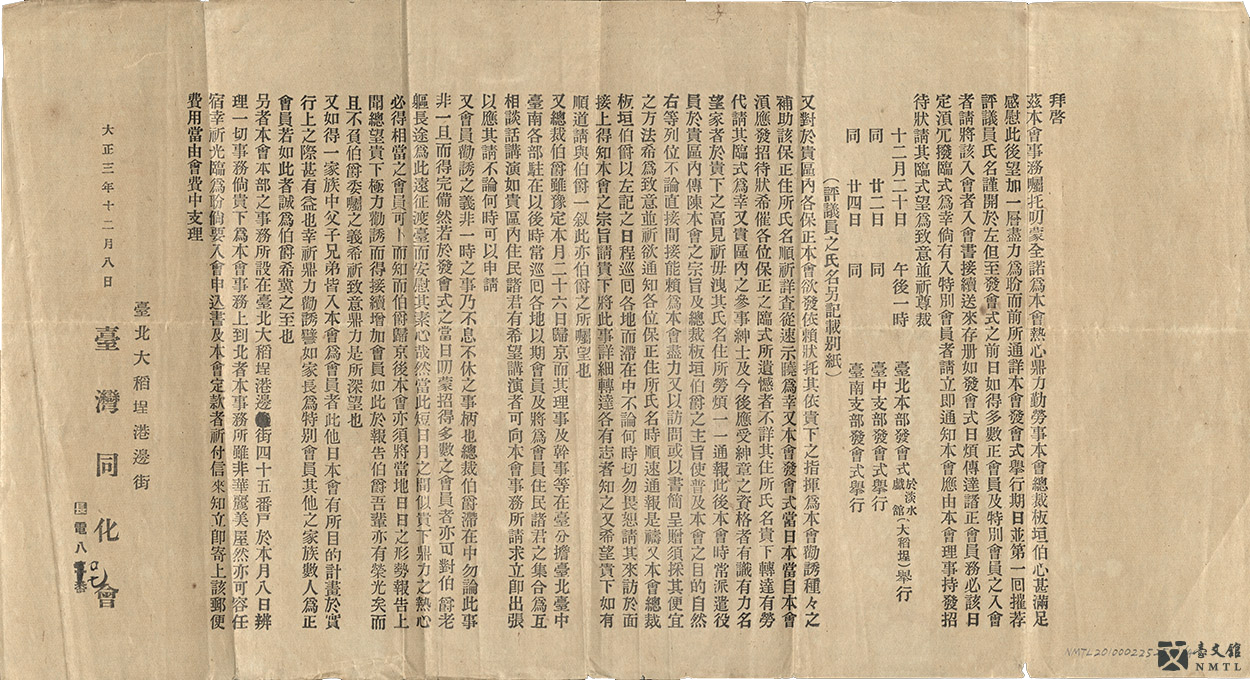
ღ Articles of the Association of Taiwan Dōkakai| In 1914, Lin Hsien-tang invited Itagaki Taisuke to Taiwan. Itagaki was the founder of Japan's first political party - the Liberal Party. Aiming at eliminating the unequal treatment of Japan's Taiwanese subjects, he proposed the creation of Taiwan Dōkakai. There are 8 pages and 17 articles in the Taiwan Dōkakai Articles of Association. The prospectus on the first page describes the background underpinning the association's establishment as well as the dates, locations, and attendees of the meetings held at the headquarters, the Taichung branch, and the Tainan branch, hoping that people would participate and invite others to join.(Donated by Huang De-shi)

ღ "Strange Woman," TAIWAN LITERATURE MAGAZINE (Second Issue)| In 1919, TAIWAN LITERATURE MAGAZINE was published. This was the first Chinese-language magazine in Taiwan. The magazine featured translated articles, poems, and novels. There were also adapted versions of foreign literature and events. The short novel "Strange Woman" was adapted from the story of Joan of Arc and introduced to Taiwan during this period.(Donated by Xu Bing-ding)
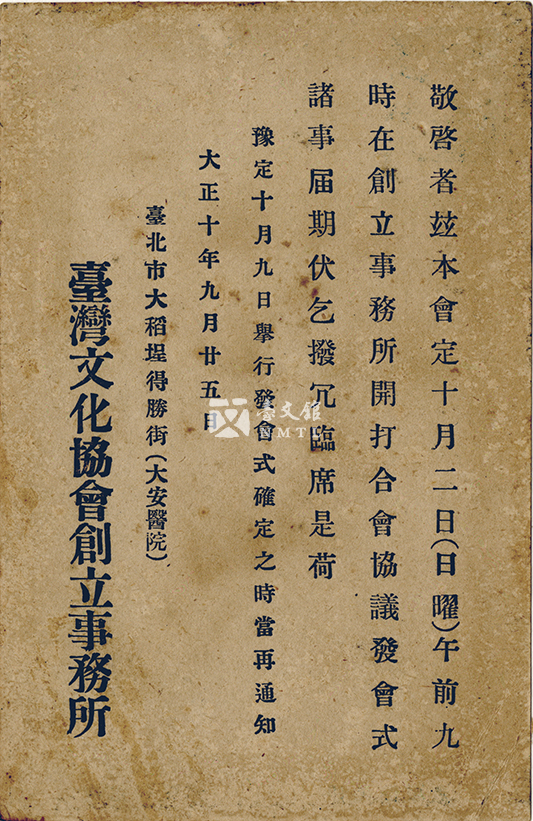
ღ Notice of the Meeting for the Office to Establish the Taiwan Cultural Association| In 1921, Chiang Wei-shui, with encouragement from Wu Hai-shui and Li Ying-zhang, founded the Office to Establish the Taiwan Cultural Association. The office was located at Da'an Hospital in Dadaocheng, Taipei. On September 25th, 1921, Chiang Wei-shui sent out a meeting notice to inform preparation committee members of the October 2nd meeting. It was decided that the opening ceremony of the Taiwan Cultural Association would be held on October 9th.(Provided by Liu Ke-quan)
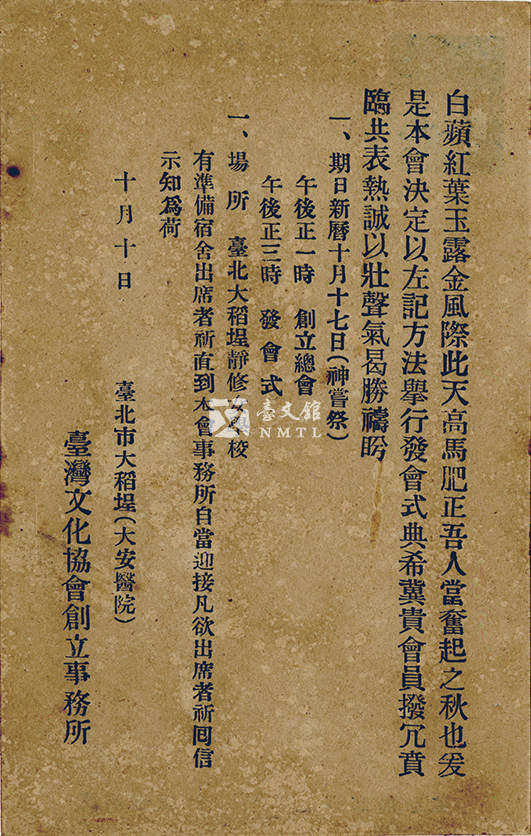
ღ Invitation Card for The Opening of the Taiwan Cultural Association| The Office to Establish the Taiwan Cultural Association sent a letter on October 10th, 1921. The letter describes autumn, when everything is in abundance, with words like "white flowers on water and red leaves," "golden wind and jade dew," and "high sky and plump horses." The Taiwan Cultural Association announced the opening of its headquarters on October 17th at Blessed Imelda's School.(Provided by Liu Ke-quan)
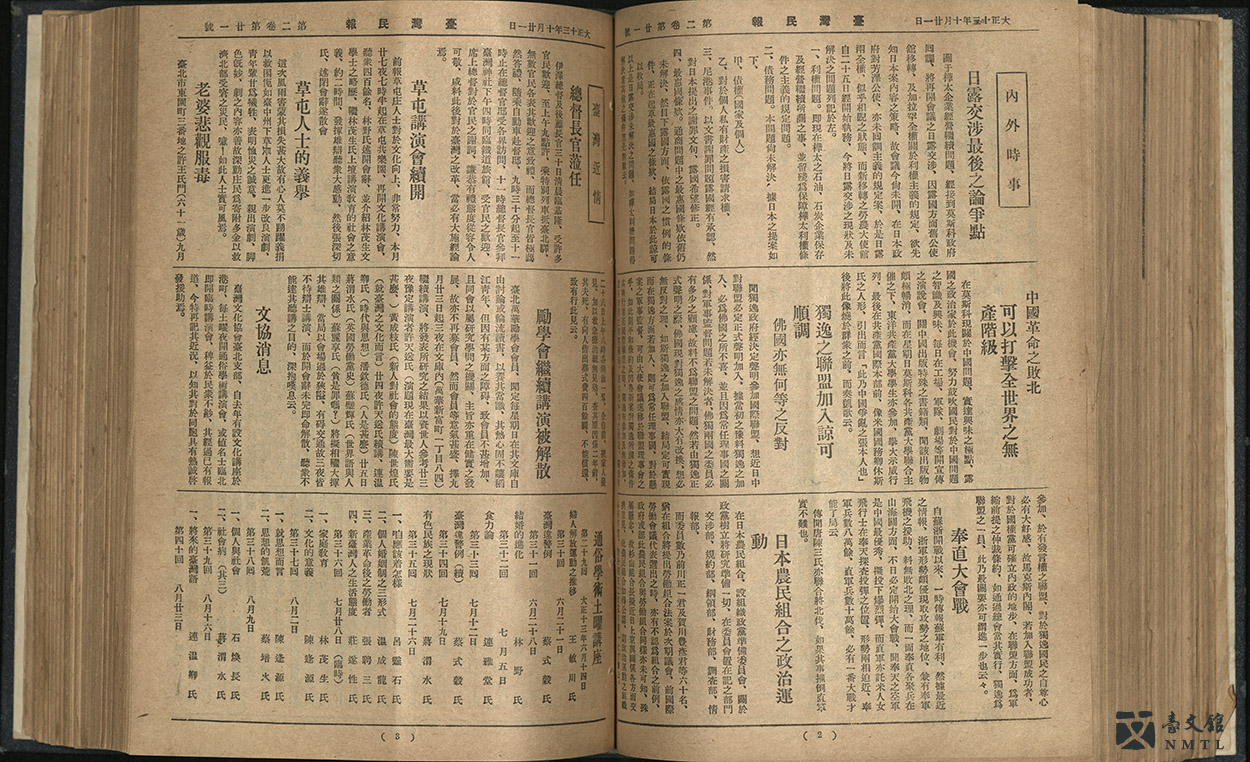
ღ THE TAIWAN MINPAO: Issues 1 ~ 50| THE TAIWAN MINPAO newspaper was founded by Lin Cheng-lu and Huang Chien-Tsong in Tokyo on April 15th, 1923. Different from the colonial-government sponsored TAIWAN DAILY NEWS, THE TAIWAN MINPAO introduced new knowledge, new ideas, and reporting on China's politics and world events. It published news about the Petition Movement for the Establishment of a Taiwanese Parliament and about the Taiwanese Cultural Association. The cultural supplement also helped nurture Taiwanese new literature. On August 1st, 1927, the newspaper was approved for publication in Taiwan under the condition that a Japanese version be added. In 1930, after receiving a new influx of capital and restructuring, THE TAIWAN MINPAO was renamed TAIWAN XINMINPAO.(Donated by the family of Liu Qing-yun)
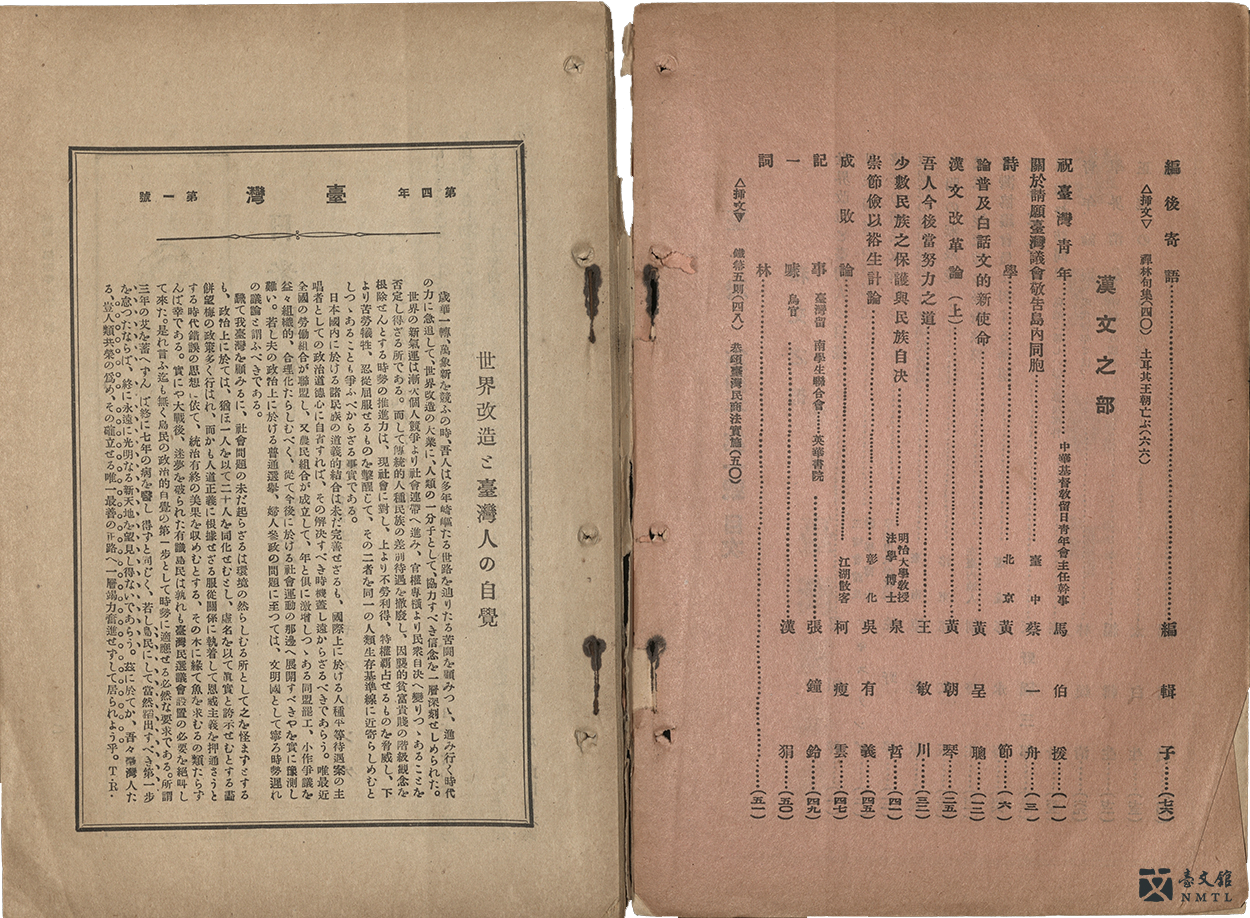
ღ THE FORMOSA— No.1, January, 4th Year, 1923 | On July 15th, 1920, Taiwanese students in Japan organized the New People Society. The organization published FORMOSA YOUTH, which was printed in both Japanese and Chinese. In 1922, the publication was renamed THE FORMOSA due to the nationalist movement and cultural enlightenment movement in Taiwan. Its main members included Wang Min-chuan, Lin Cheng-lu, Wu San-lien, and Tsai Pei-huo, who continued to promote international trends, the Petition Movement for the Establishment of a Taiwanese Parliament, and ideas such as self-determination.(Donated by Liu Ke-quan)

✒ Education Within Everyone's Reach! Opening a Window onto the World
From 1922 to 1925, members of the Cultural Association, unafraid of the Japanese colonial authorities, carried piles of books to temples, various offices, and sports associations to bring knowledge to ordinary people. They wanted knowledge to be more than words and images, so they read newspapers aloud in Japanese and Chinese to the public and spoke on a range of topics in THE TAIWAN MINPAO, OSAKA ASAHI NEWS, and SCIENTIFIC KNOWLEDGE.
They had a dream - to help people understand the changes in the world through the public reading of newspapers. They stressed that, far from being inferior, Taiwanese ranked among the best people in the world.
Tsai Pei-huo was a member of the Cultural Association. He realized that literacy was key to the public learning about culture. One summer, as an early teenager, his brother introduced to him a dozen romanized letters used by the church. From that moment on, they began writing to each other in vernacular Taiwanese. It made Tsai Pei-huo aware of how easy languages could be to learn and read and applied to touch people's hearts.
Tsai Pei-huo, standing at the forefront of social movements, looked back on the history of church romanization. Since the 19th century, vernacular Taiwanese written in romanized letters had served as a foundation for believers to read about happenings in the world. Tsai hoped that one day it might also be adopted by Taiwanese society in general. Facing the controversies behind the dominance of Chinese characters, he remembered being touched and astounded when writing romanized letters for the first time. He actively promoted the Pe̍h-ōe-jī (vernacular writing) used by the church in Taiwan, and wrote CHA̍P-HĀNG KOÁN-KIÀN (TEN CONCEPTS). He also won the support of fellow members such as Lin Hsien-tang and Chen Feng-yuan. Tsai led the Vernacular Writing Movement to its apex in the 1930s.
Society is constantly changing, but the people of Taiwan, my friends, are still following the past and not catching up with the current trends. This is because of a lack of education and learning. However, we now understand that. Now, we must quickly promote education. Speaking of education, it is not something that can be achieved in a short time. Much effort will be required before we can see some results.
Tsai Pei-huo, "New Taiwan and Romaji," CHA̍P-HĀNG KOÁN-KIÀN (TEN CONCEPTS)
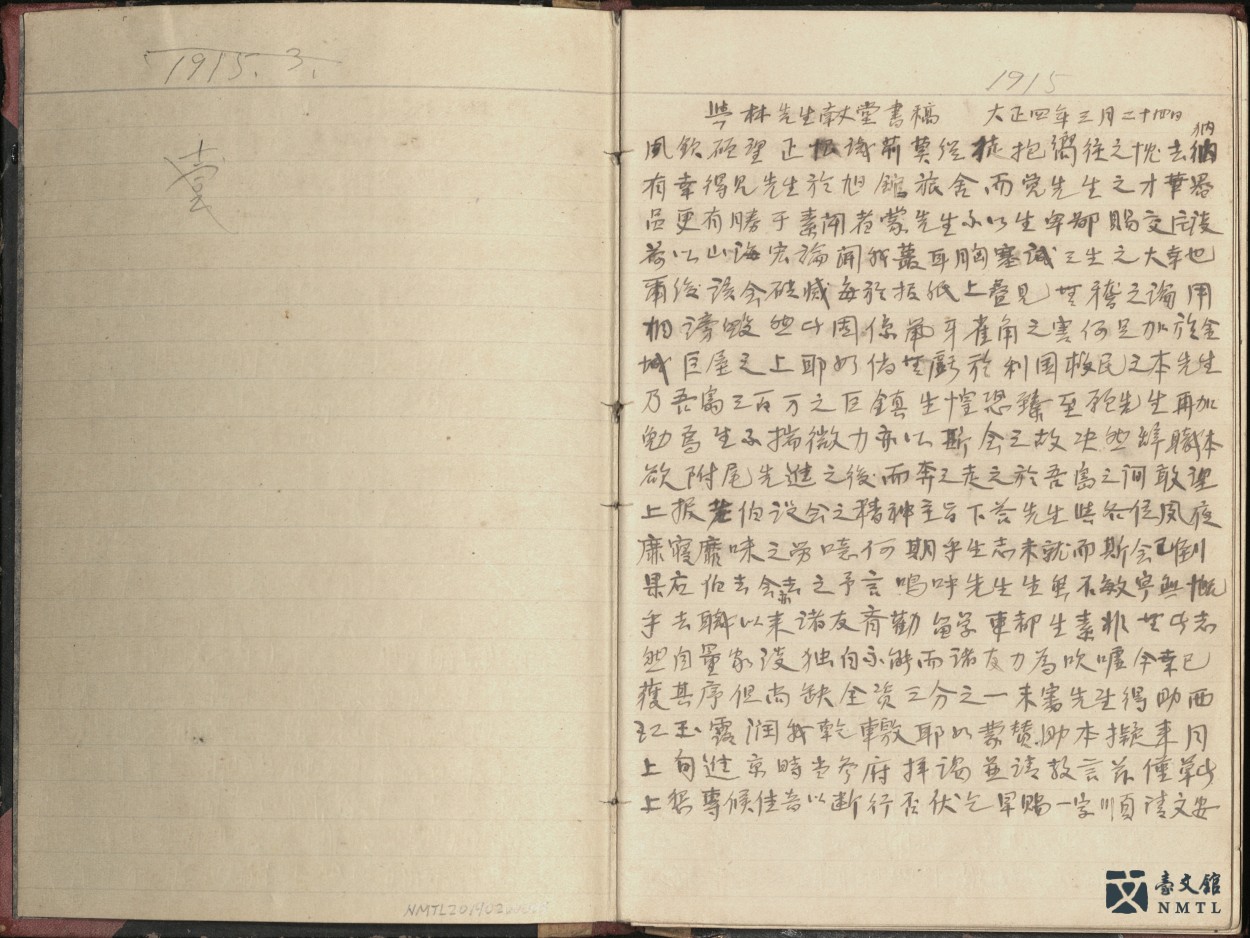
ღ Tsai Pei-huo's Correspondence Notebook| Tsai Pei-huo first became acquainted with Lin Hsien-tang in 1910 in the Taiwan Assimilation Society. Tsai, originally from Beigang, Yunlin, relocated to Tainan after getting married. After the Taiwan Assimilation Society disbanded, he lost his job. He was concerned about Taiwan's situation and thus decided to further his learning in Japan. With little financial support, Tsai wrote to Lin, whom he had only met several times, to explain his ideas about Taiwan's current situation and his ideals for the future in hopes of winning Lin's support. His letters were written mostly in classical Chinese and contained copious references to Chinese literary classics. Later on, Tsai often exchanged Chinese poems with Lin Hsien-tang.
This notebook is as a collection of sponsorship records for the first modern generation of overseas students from Taiwan. To overcome their predicament and broaden their horizons, young students created their own platform to seek sponsorships for continuing education abroad. Each letter here was written with passion and sincerity. People to whom Tsai wrote also included his father-in-law Wu Hong-mao and Dr. Gao Zai-de of Tainan's Gao Zhang family clan.(From the National Museum of Taiwan Literature permanent collection)
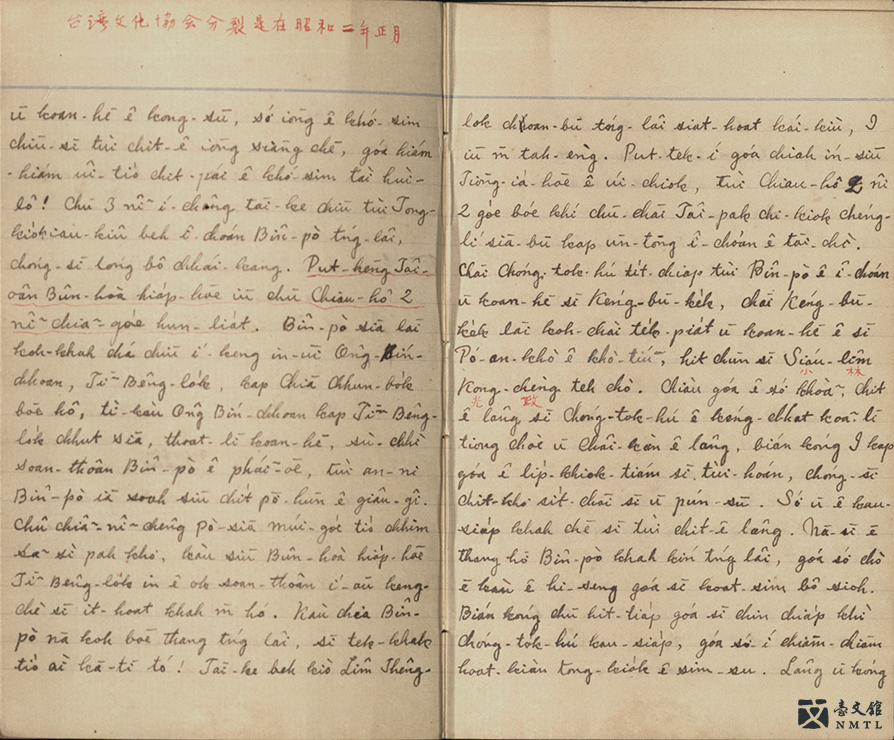
ღ TSAI PEI-HUO DIARY 1929-1931| This diary was written in roman cursive. The words in red "Taiwan Cultural Association split in January 1927" was probably noted down by Tsai Pei-huo when he revisited his diary. On the entry of July 16th, 1929, he mentioned that after the association split, THE TAIWAN MINPAO also had difficulties in its operations because of conflicts between the members. However, Tsai Pei-huo, hoping to see THE TAIWAN MINPAO return to Taiwan, worked extremely hard to negotiate with the Director of the Police Affairs Bureau and Chief of Security Department. Eventually, he succeeded in moving the publishing of THE TAIWAN MINPAO back to Taiwan. At the same time, he helped pay off the debt owed by the newspaper. Then, he handed the newspaper over to Lin Cheng-lu. The time intervals between the entries are irregular. The biggest interval is over 10 days. The most frequently mentioned topic is the work regarding the vernacular writing movement, including writing textbooks on vernacular writing and holding vernacular writing study sessions.(From the National Museum of Taiwan Literature permanent collection)
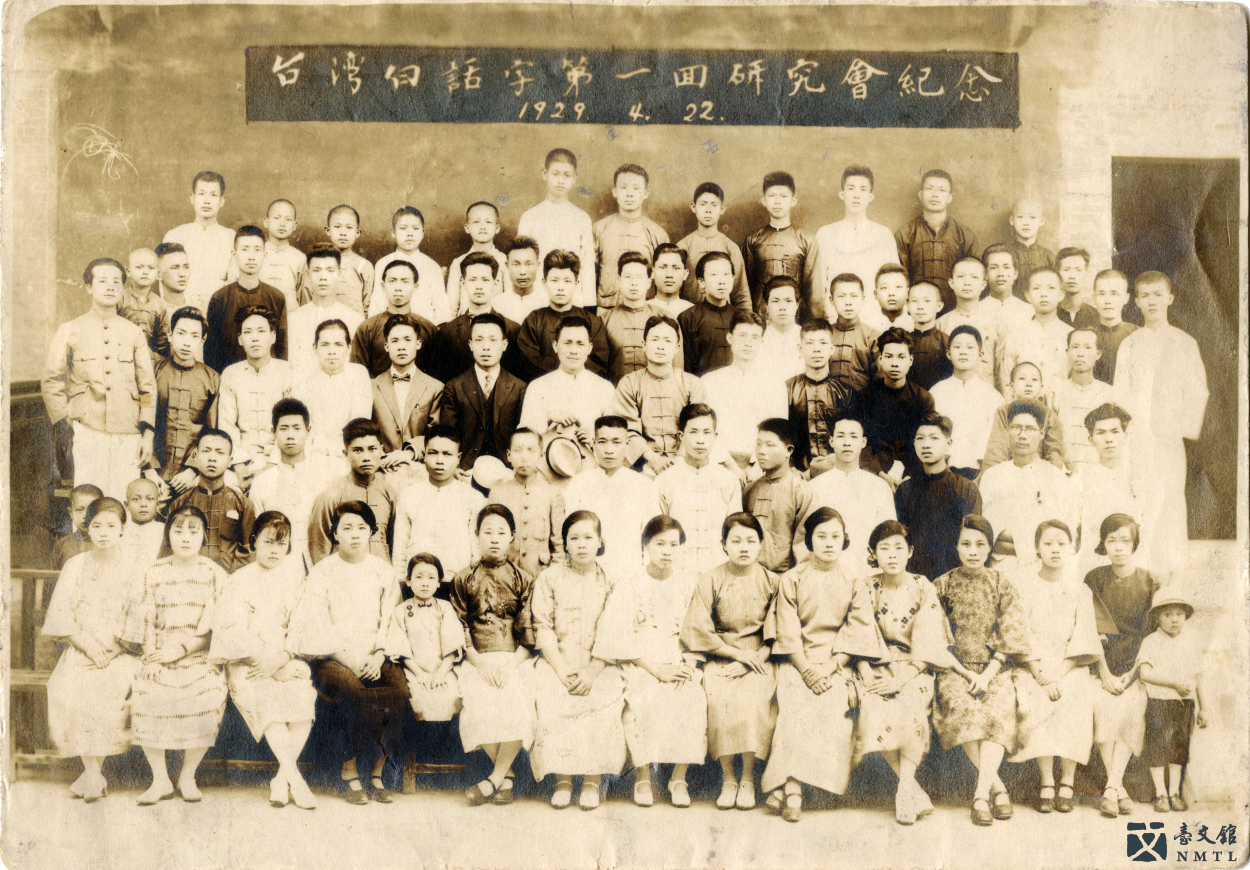
ღ 1st Taiwan Vernacular Writing Seminar| On April 22nd, 1929, Tsai Pei-huo (7th from the left, third row), Wang Sou-lu (8th from the left, third row), Han Shi-quan (9th from the left, third row), and participants of the first Taiwan Vernacular Writing Seminar had a group photo taken at the martial temple. The three sessions lasted six weeks. Tsai Pei-huo mentioned in his diary that there were around 90 participants in the third session, of which there were 40 women. Based on six weeks of learning experience, participants that diligently studied for two weeks would be able to learn the writing system, and it would take another two weeks for them to be proficient.(From the National Museum of Taiwan Literature permanent collection)
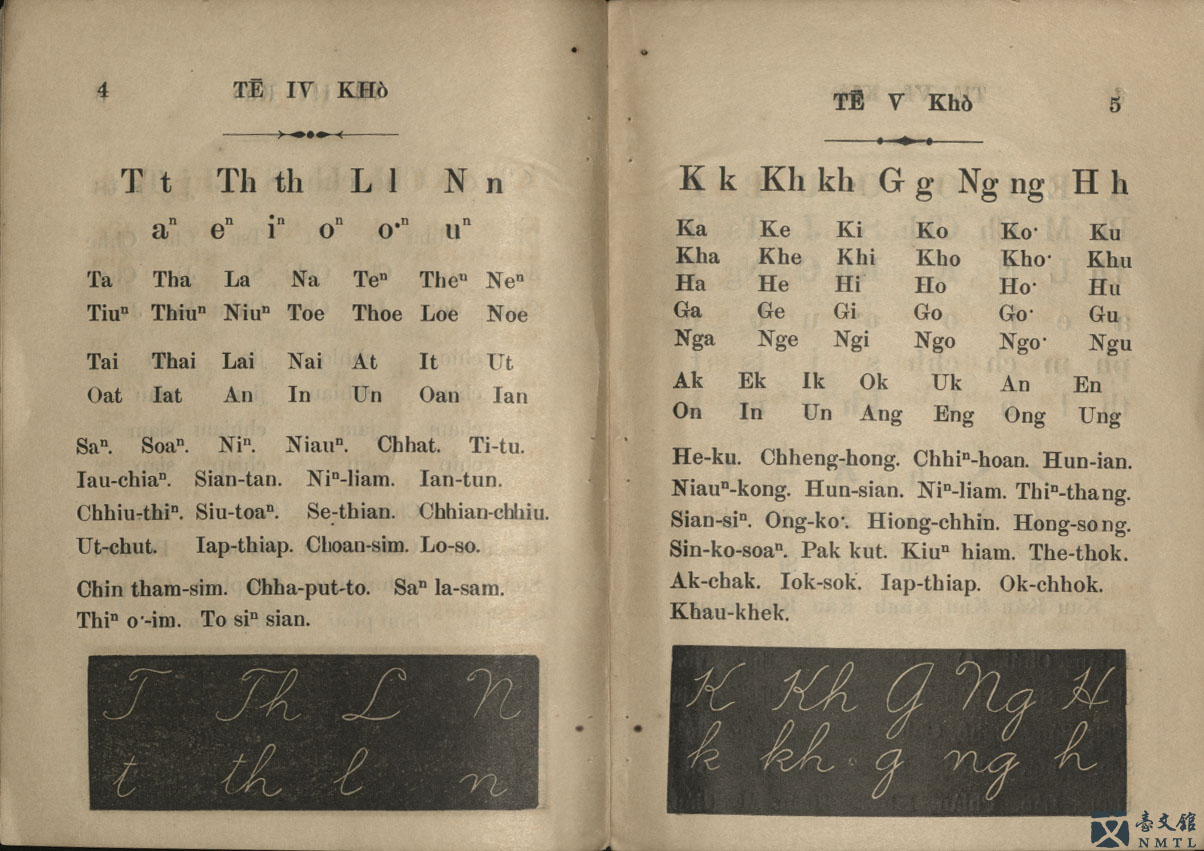
ღ New Taiwan Vernacular Writing (Church Romanization) Textbook (1st Vernacular Writing Seminar)| The back of the book is printed with the date of publication: March 9th, 1929. TSAI PEI-HUO DIARY records that 5,000 copies of the book were printed. Also, a meeting was held for the members of the Tainan People's Club. The first advertisement invited 60 members. Sadly, it was cancelled because of interference from the Tainan Police Bureau. Later on, after Tsai Pei-huo's tireless persuasion (four times a day), the meeting was finally approved under certain conditions. The record shows that a total of three sessions were held.(From the National Museum of Taiwan Literature permanent collection)
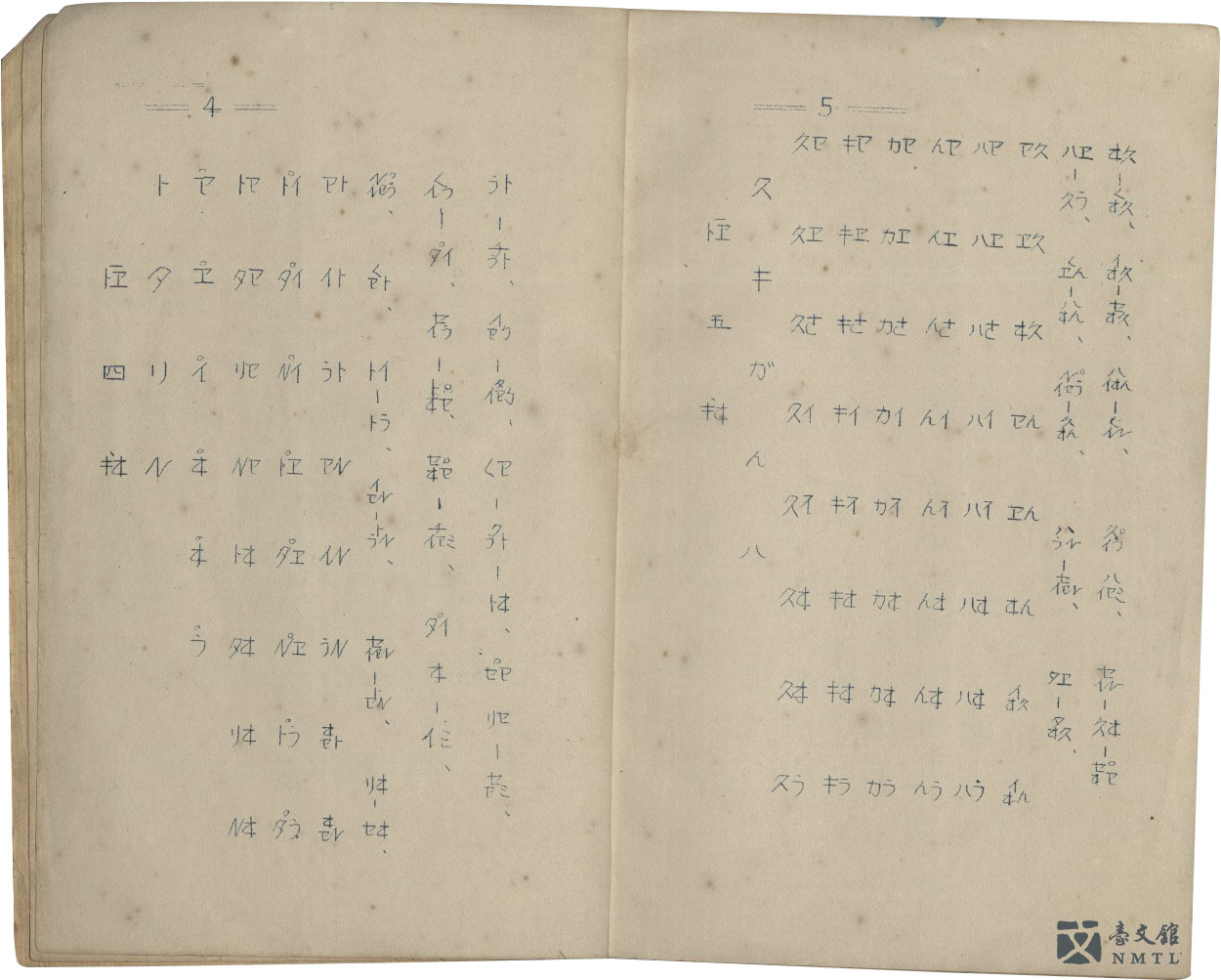
ღ New Taiwan Vernacular Writing Textbook (2nd Vernacular Writing Seminar)| The back of the book is printed with the date of publication: June 28th, 1931. Unlike TSAI PEI-HUO DIARY, this was intended to be the textbook for the second vernacular writing session held in 1931. In 1931, Tsai Pei-huo travelled to Tokyo to attend the petition for the establishment of a Taiwanese parliament. He met Takio Izawa, who suggested that he write Taiwanese with Japanese katakana (alphabetic script). After he returned to Taiwan in May, he began transcribing Taiwanese into katakana, invented symbols, and a few Chinese phonetic symbols. Tsai Pei-huo wrote in his dairy on May 17th, 1931 that because most of the symbols were Japanese, those who had gone to public school would be able to read them. Therefore, promoting this system to the general public would not take long.(From the National Museum of Taiwan Literature permanent collection)
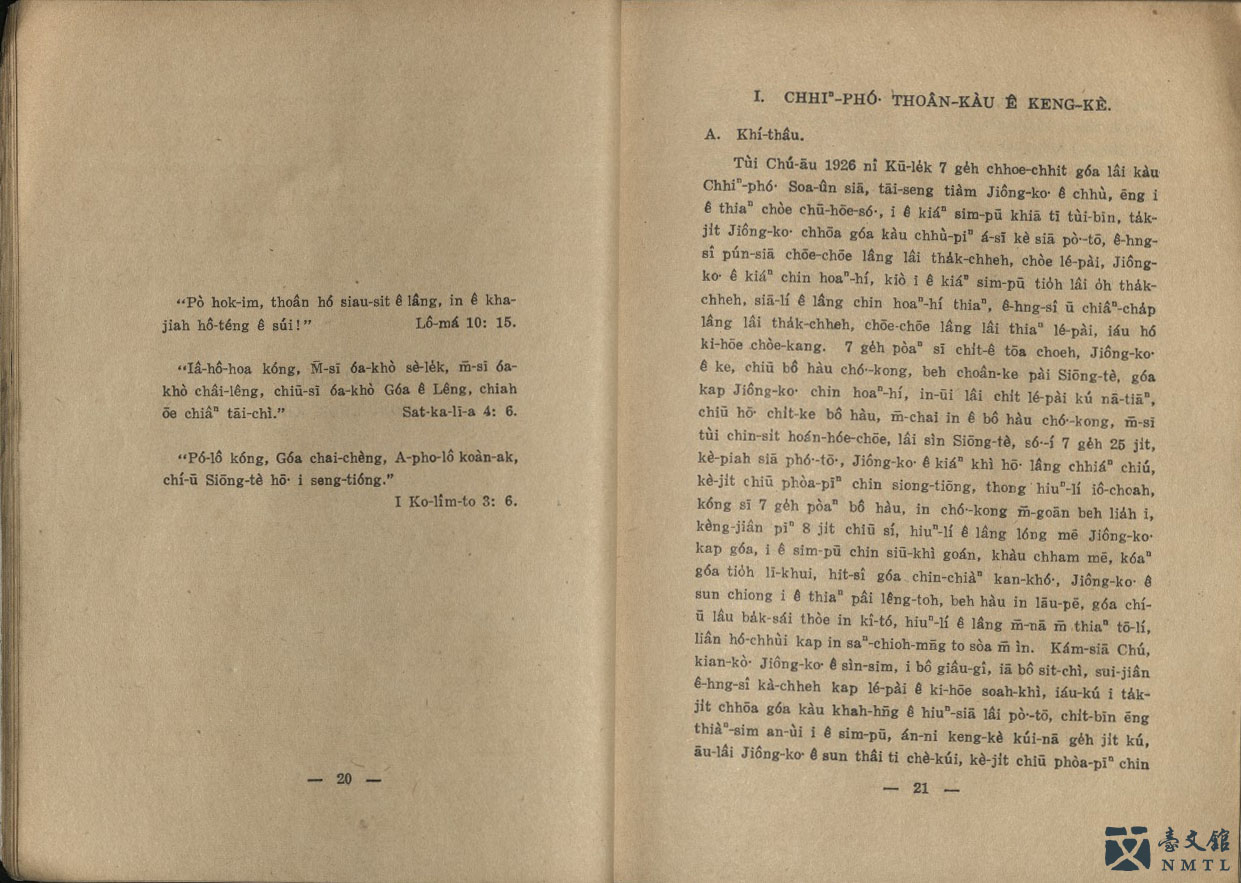
ღ BÂN-LÂM KI-TOK-KÀU LÚ-SOAN-TŌ-HŌE X NÎ KÌ-LIĀM-KHAN Southern Min Women's Mission Fellowship Special Issue for the 10th Anniversary (1926-1936)| Southern Min Women's Mission Fellowship's special publication celebrating its 10th Anniversary. It records the establishment of the fellowship, as well as the status of each work area and branch. It consists entirely of testimonies. It also testifies to the women spreading the Gospel bravely, saying that "those who spread the Gospel are beautiful."(The Compilation of Taiwanese Vernacular Writing Documents Project)
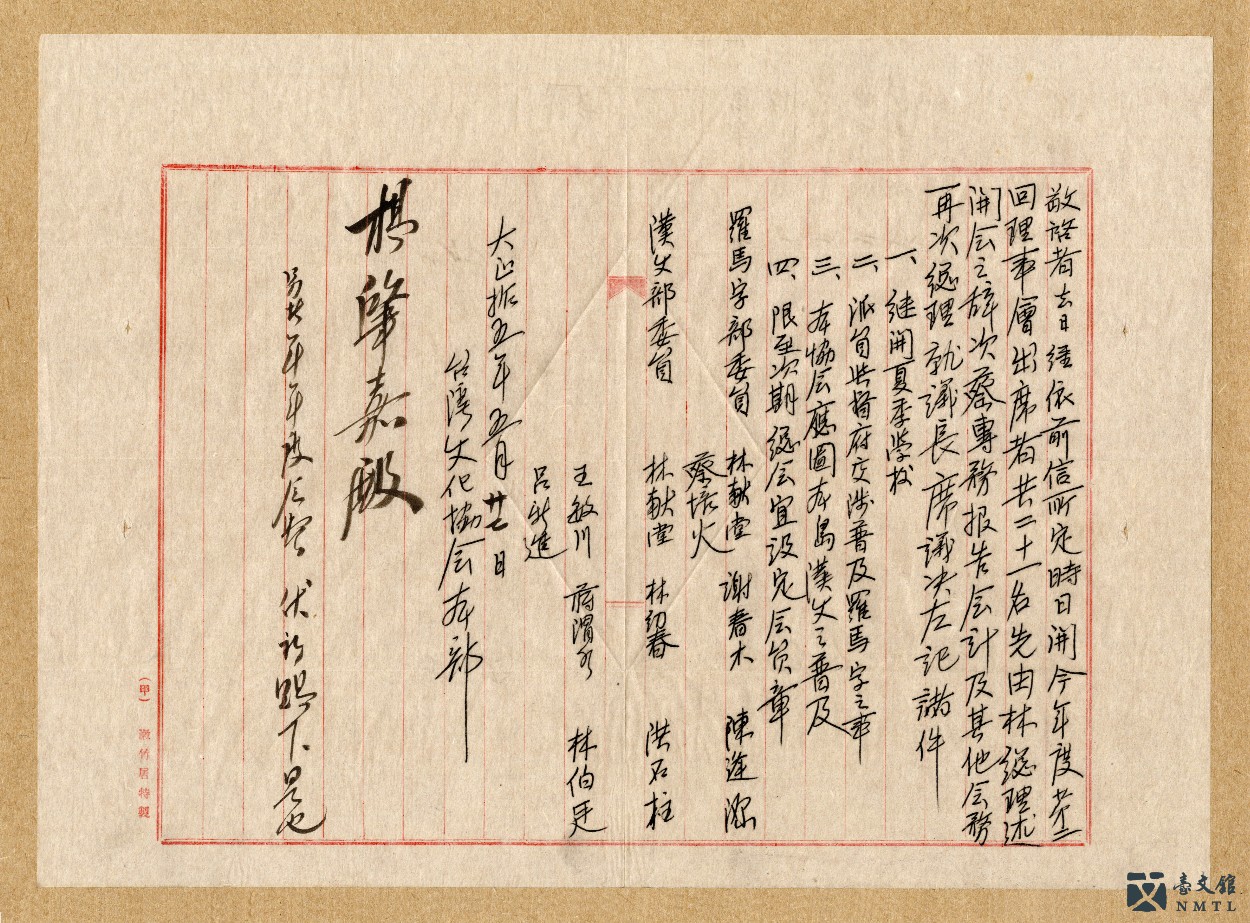
ღ Letter from Taiwan Cultural Association Headquarters to Yang Zhao-jia| From May 15th - 16th, 1926, the second council of Taiwan Cultural Association took place at Lin Hsien-tang's residence in Wufeng. In this meeting, participants talked about whether to continue the summer school or organize a team to climb Mt. Yushan instead. They also talked about setting up evening study Chinese sessions and promoting the vernacular writing system. Among those, the promotion of vernacular writing attracted attention. On May 27th, 1926, the association explained the resolutions made during the second council in a letter to Yang Zhao-jia.(Provided by Liou Ran Ju Reference Room)
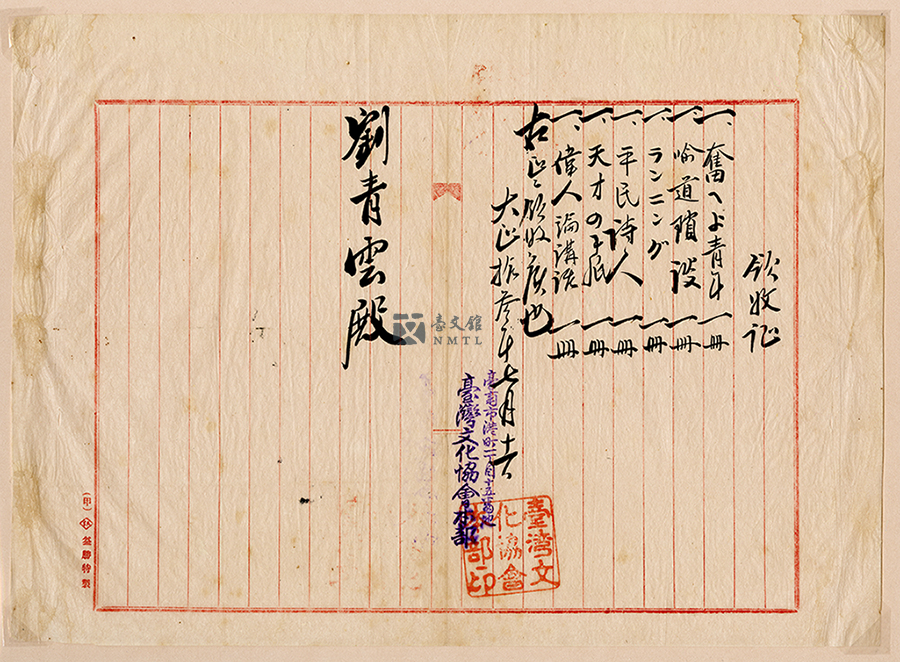
ღ List of Books Donated by Liu Qing-yun| After graduating from Keio University, Liu immediately joined the Taiwan Cultural Association. Newspaper Reading Society needed large sums of money to buy local and international news as well as magazines. This list shows the books generously donated by Liu Qing-yun to the cultural association. The books were provided for the general public with the goal of supporting "improving Taiwanese culture" through action.(Provided by Liu Ke-quan)
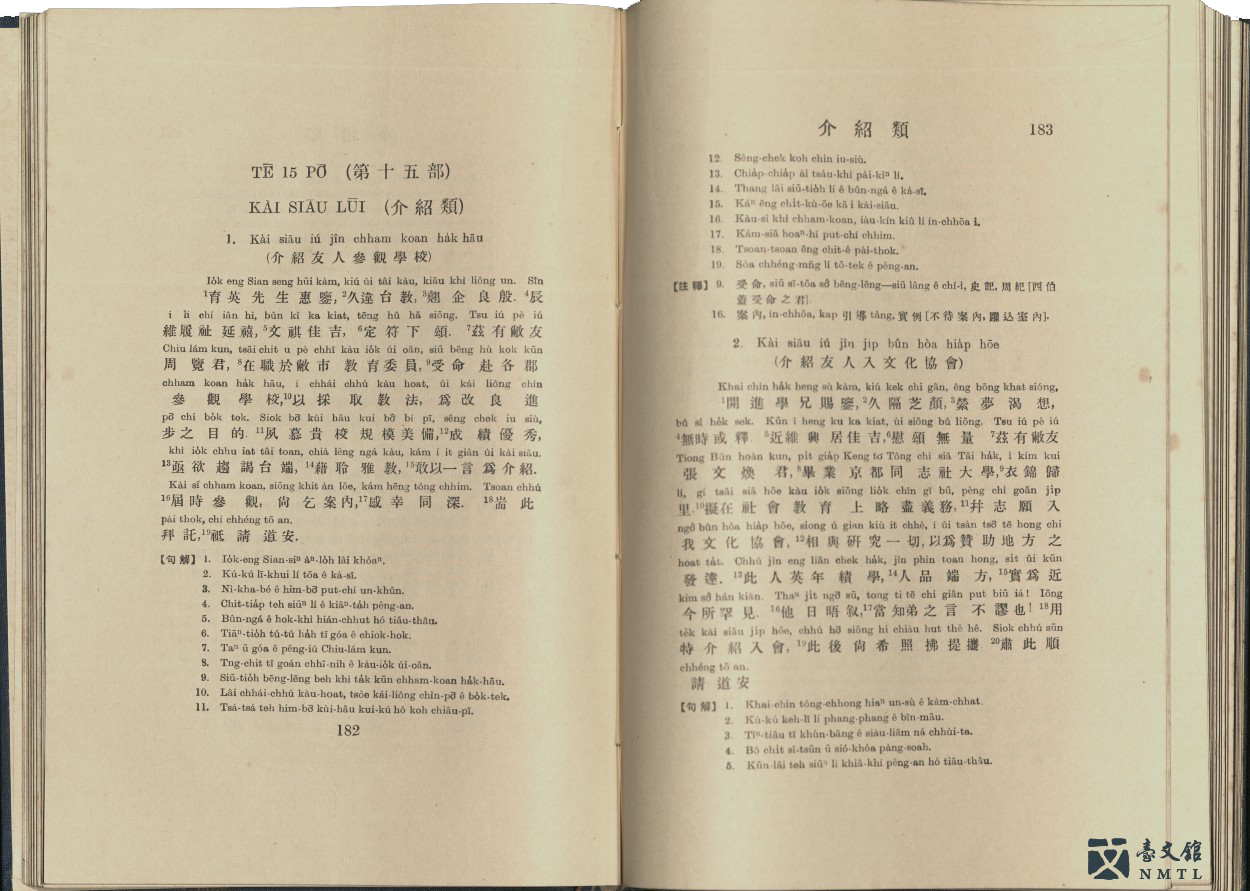
ღ Liu Qing-yun CHURCH ROMANIZATION FOR PRACTICAL WRITING| Liu Qing-yun's CHURCH ROMANIZATION FOR PRACTICAL WRITING was published in 1925. It is a book that teaches how to write letters and learn Chinese. The book provides examples based on current social events. The examples are annotated with Roman letters for phonetic transcription and Chinese characters for explanation. The examples are organized into 34 categories, including greetings, bestowment, recruitment, request, and celebration. In the introduction category, there is an article called "introducing friends to the Taiwan Cultural Association," which explains that the requirements for joining the association include a certain level of education as well as moral rectitude. Qualified members can definitely help the association with local matters.(Donated by Liu Ke-quan)
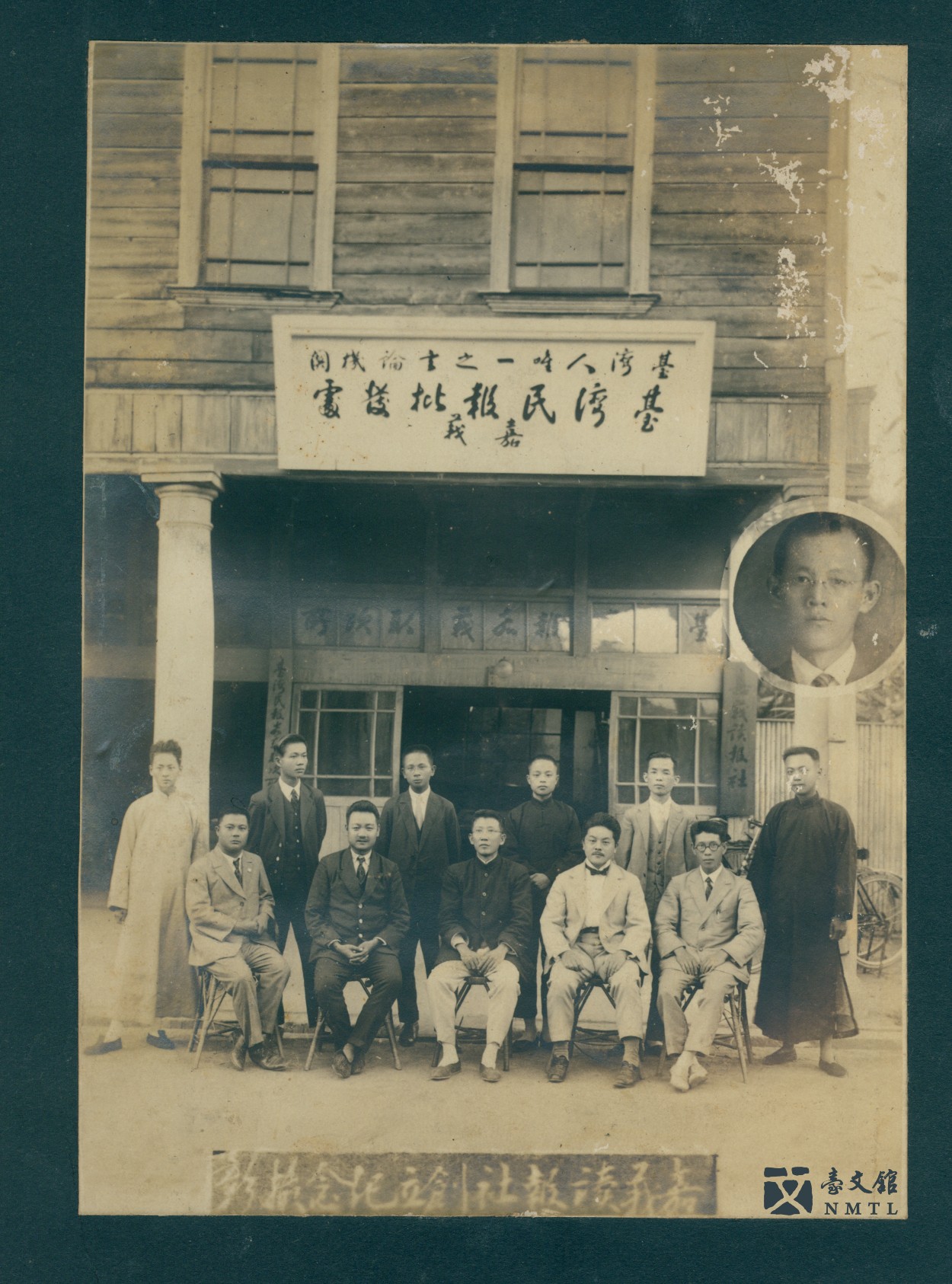
ღ Commemoration Photo of The Establishment of Chiayi Newspaper Reading Society| The inauguration of Chiayi Newspaper Reading Society. It was established in the place where reserved copies of THE TAIWAN MINPAO could be picked up. Participants included Wang Gan-tang (first from the left, front row), Huang San-peng (third from the left, front row), Chen Zong-hui (fourth from the left, front row), Fang Hui-long (first from the right, front row), and Liu Ming (second from the right, second row). An article in the THE TAIWAN MINPAO (No. 115) writes "Last autumn, students who were from Chiayi and now studying abroad held several meetings with other passionate people… Taiwan Cultural Association then organized a couple of speeches and founded the newspaper reading society…" Based on this, it can be deduced that the Chiayi Newspaper Reading Society was established in 1925.(Donated by Wu Ke)
➹ Cultural Association Q&A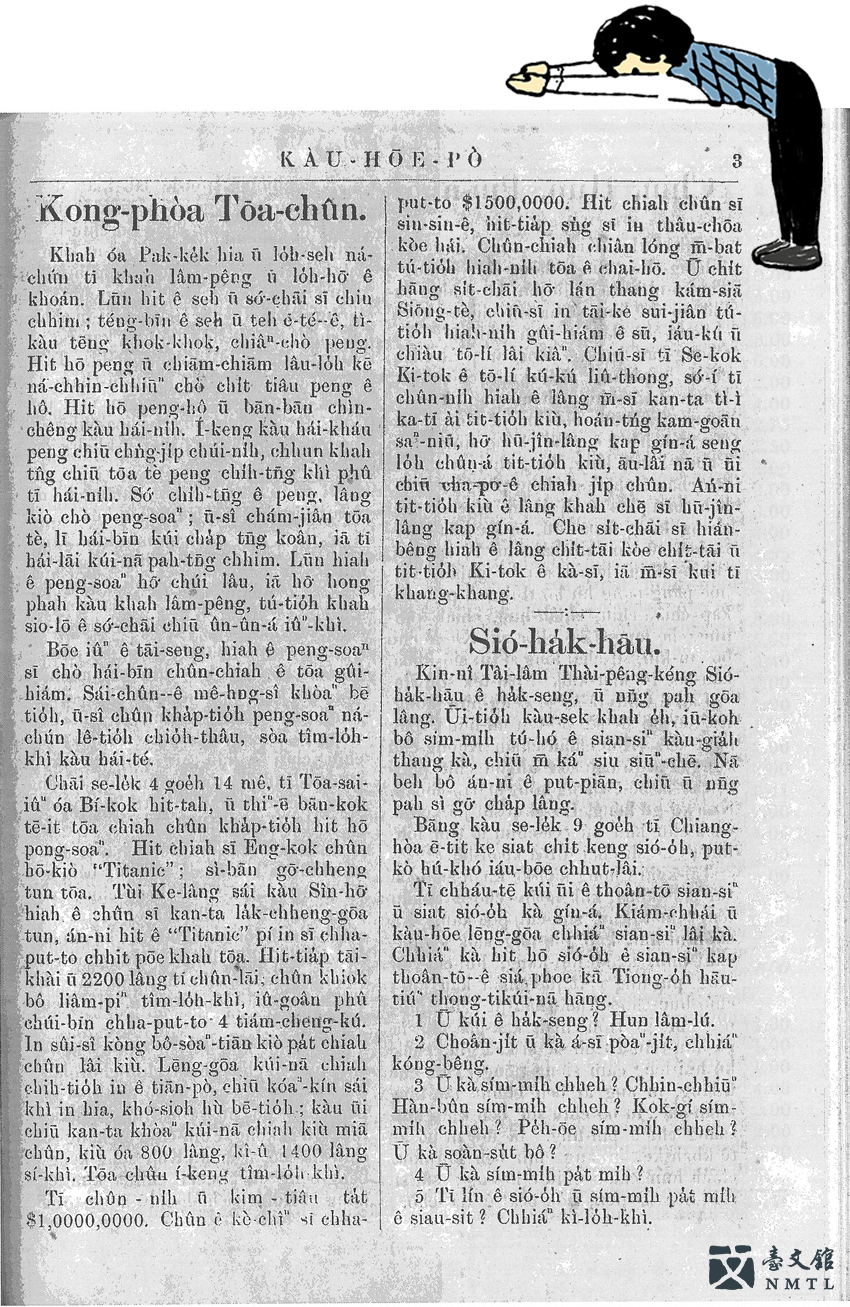
Q: A piece of news from the U.K. was published on the third page of Vol. 327 of TAINAN CHURCH NEWS in June 1912. Which major international incident happened at the time?
【Hint】
peng-soaⁿ: Iceberg
thiⁿ-ē bān-kok tē-it toā chiah chûn: Largest Ship in the World
tîm-lo̍h-khì: Sinking
A: A news article titled "Kong-phòa Tōa-chûn (Sunken Ship)" published in the TAINAN CHURCH NEWS in June 1912 reported on the sinking of the Titanic, which took place on April 14th, 1912 in the North Atlantic Ocean. TAINAN CHURCH NEWS was founded by Thomas Barclay, a missionary of the Presbyterian Church of England, in July 1885. The newspaper reported on local church news, English Church news, international affairs, and general affairs in Pe̍h-ōe-jī (Taiwanese vernacular writing), allowing people who could not read Chinese characters the opportunity to absorb knowledge and learn about the happenings in the world. (Figure: Collection of the National Museum of Taiwan Literature)

✒ Common Cause, Divergent Paths. Ideological Principles Split TCA in Two
The Cultural Association's ideal to enlighten the public spread across organizations such as Taipei Youth Association, Tong-Xiao Youth Association, Yan Feng Youth Association, and Dajia Rixin Association, which all actively recruited members. In 1927, the Cultural Association split due to differences in class consciousness. Nevertheless, both the right and left factions approached the public with their passion, with the Taiwanese People's Party, New Cultural Association, and Farmers' Group all working harder to get closer to the public.
Lin Pan-long, a member of the wealthy Lin clan in Wufeng, Taichung, offers a famous example of cultural outreach during this period. Lin founded the Wufeng Yixin Association, which aimed to "rebuild Taiwan using a fresh, new approach." He encouraged autonomy among the farming villages in Wufeng. There was also the Chikan Working Youth Association in Tainan led by Zhuang Song-lin and Lin Qiu-wu. This association founded THE EQUATOR NEWS to speak out for the proletariat and delineate their goals for social reform. Their writings gave voice to the pent-up rage of the working class.
Feminism also began to gain a platform during this period. Yeh Tao used a basket as her podium and voiced her ideals in markets to fight for women's rights. However, she and other progressive women infuriated both Taiwan's conservative society and the Japanese colonial government, and they became a target of public condemnation. For instance, women's fight for love was treated as a news event and condemned as unethical. Changhua Women's Association, a progressive women's organization founded in 1925, engaged in polemical exchanges in Taiwan's newspapers in the aftermath of one of its members eloping with the son of a local official. This "scandal" ultimately forced this association to end operations and disband.
____.¸¸.¤·.¸¸.·´¯`·.¸¸.¤ ღ ¤·.¸¸.·´¯`·.¸¸.¤·.¸¸.____
Dear,
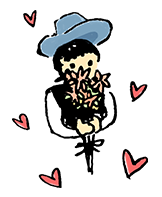
I've written "The A-Pian Song" and am waiting for someone to compose the music. Though I wrote it in Chinese, I feel it is only suitable if it's sung in Taiwanese. I heard that you've been learning Pe̍h-ōe-jī, and gone to seminars held by Mr. Tsai Pei-huo at the Buddha of the Kuanyin Hall of the Martial Temple. Such an interesting experience! Mr. Tsai is Christian but he's not superstitious. He walks into a temple without hesitation to reach the people. He often says that our society has been changing and that we must work together! I think his words make very much sense. No matter what, what I care about the most is you because you must become literate and make your life better, which I think is the most important thing.
References: Lu Bing-ding's "The A-Pian Song", Tsai Pei-huo's MY TEN VIEWPOINTS.

📪️ Lu Bing-ding(1901—1935), born in Tainan. He wrote under the pen name Shou Min. He graduated from Taipei Language School. He served as the principal at Tainan Da'nei Public School, Liujia Public School, and Tainan Dachuang Public School.
During his student years, he was a close friend with Chiang Wei-shui. When he was a member of the Taiwan Cultural Association, he provided live narration for silent films on behalf of the film team and was a participant in the culture theatre troupe. After the Taiwan Cultural Association split, he actively participated in labor movements during his involvement with the Taiwan People's Party. In 1928, he began to join Taiwan labor unions to speak for laborers. Although arrested by the Japanese police multiple times, he continued to work hard for the rights of laborers.
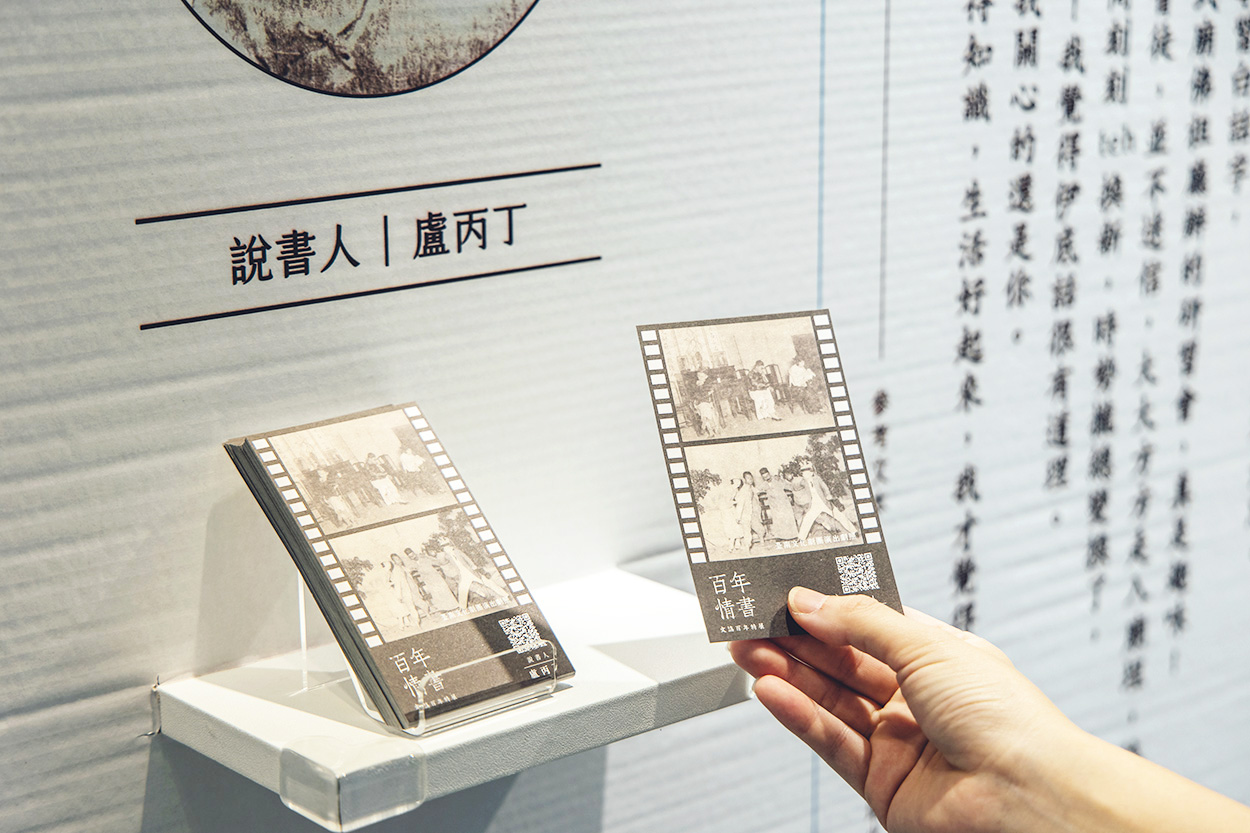
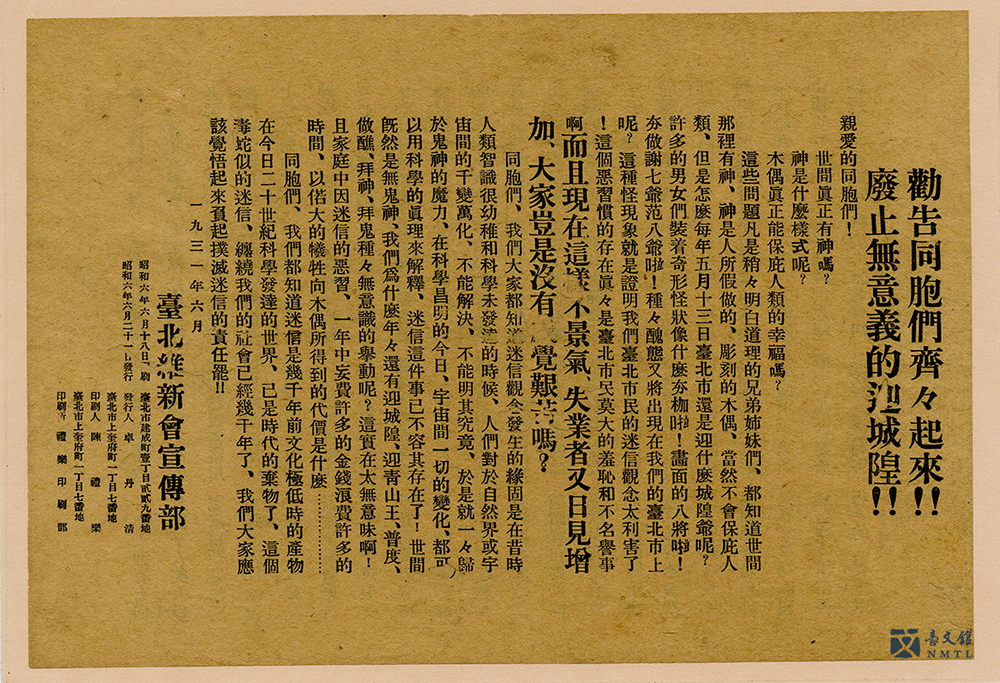
ღ Flyer on Anti-Superstition Taipei Reform Association| In 1928, the Taipei Reform Association was founded as part of the effort to eradicate flaws in the social systems. In 1931, the economy of Taiwan hit a low point. The Taipei Reform Association distributed flyers before the City God Reception Parade: "Now with this recession and while the number of jobless people is increasing, haven't you yet realized the difficulties faced by our society?" The Taipei Reform Association worked together with the New Cultural Association, Farmers' Union, and Young Workers Association to hold speeches against wasteful superstitious activities that increased the economic burden of the people.(Provided by Zhuang Ming-zheng)
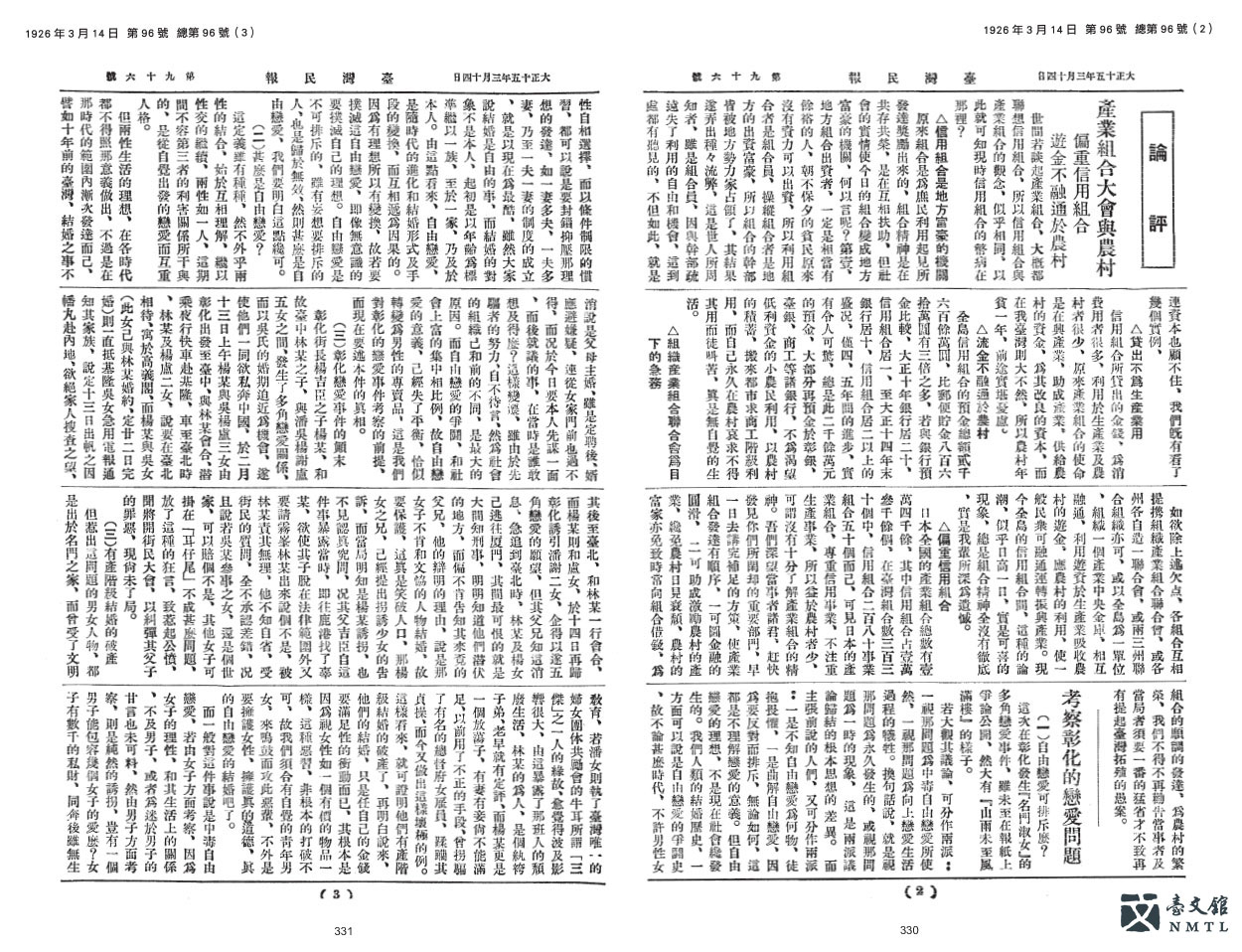
ღ "A Study on Romantic Pursuits in Changhua" THE TAIWAN MINPAO| In February 1926, several members of the cultural association, including Yang Ying-qi (son of Yang Ji-chen, Head of Neighborhood in Changhua), Lin Shi-qian from Wufeng's Lin family, Pan Zhen, Wu Jin-yuan, Yang Jin-huan, Xie Jin-lan, and Lu yin, attempted to travel to Xiamen, China by boat without their families knowing. Except for Pan Zhen, the other four women were members of the Changhua Women's Association. Changhua Women's Association was the first all-women organization aimed at progressive thinking, women's independence, and independent thinking. At the time, although the cultural association advocated freedom and human rights, it still frowned up on this incident. Issues involving traditional vs. new ideas about class and the pursuit of love without limitations triggered heated discussions. The Government-General of Taiwan also criticized the cultural association. The Changhua Women's Association was suspended after the incident.(Collection of the National Museum of Taiwan Literature)
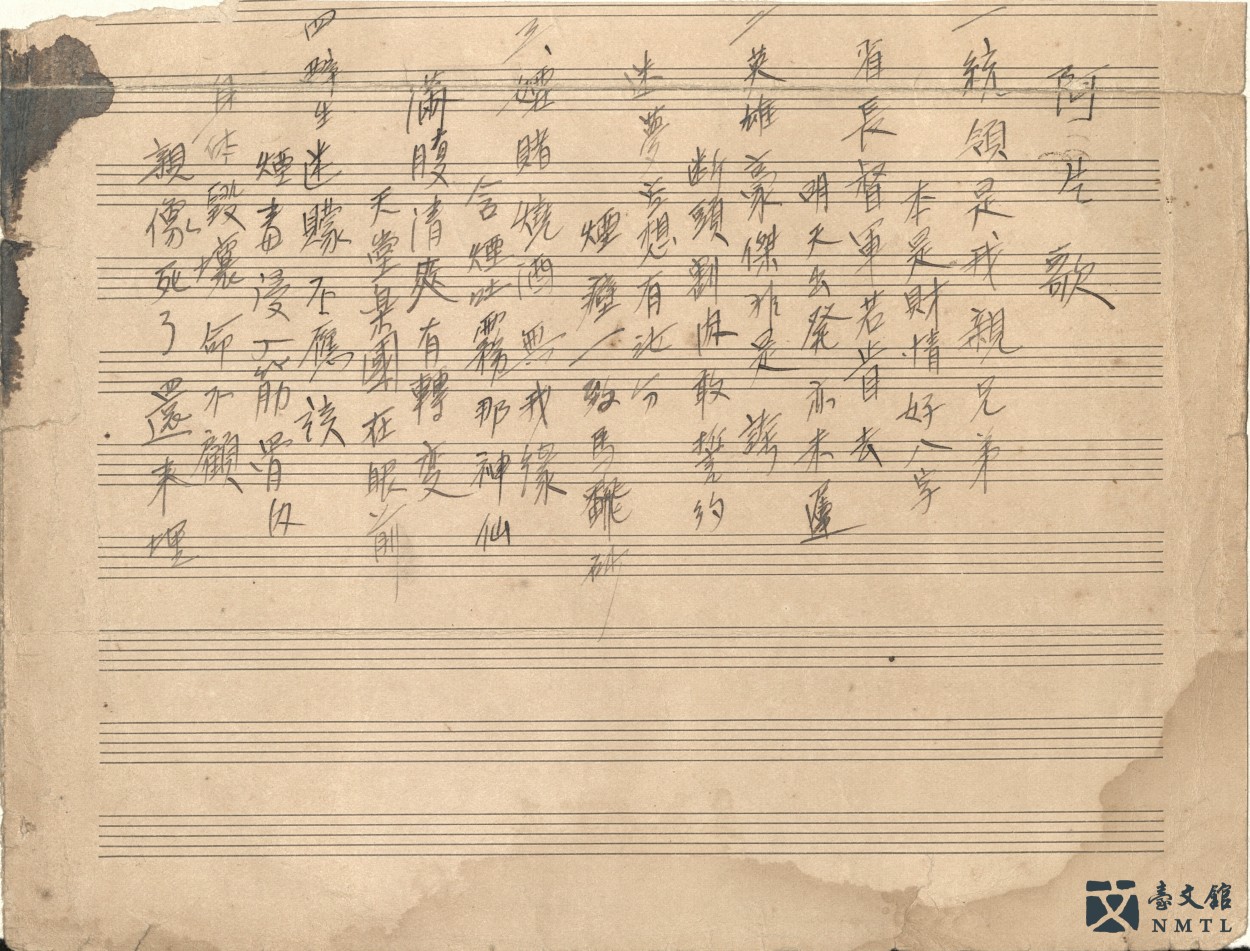
ღ "Song of Ah-Pian": Lyrics by Huang Jin-huo, Composed by Zheng you-zhong| Huang Jin-huo played an important role in founding and promoting "Tainan Cultural Theatre" and "Anping Theatre." He and Han Shi-quan founded Republic Hospital in 1922, and were responsible for the surgery department and the internal medicine department, respectively. Huang Jin-huo followed the cultural association and pursued the spirit of "culture improvement," aiming at promoting cultural movements with theatrical performances. Apart from being a doctor, Huang was also a lyricist for Taiping Records. His works include "Song of Ah-Pian" and "Spring Lament." "Song of Ah-Pian" consists of four meters. It is about attitudes toward life, and those who like to smoke are not far away from heaven, suggesting the imminent end of their lives. The music was composed by Zheng you-zhong, who was the director of the famous Youzhong Orchestra. Before gramophones became prevalent, orchestras like this made it possible for people to enjoy music.(Donated by Lin Zhang-feng)
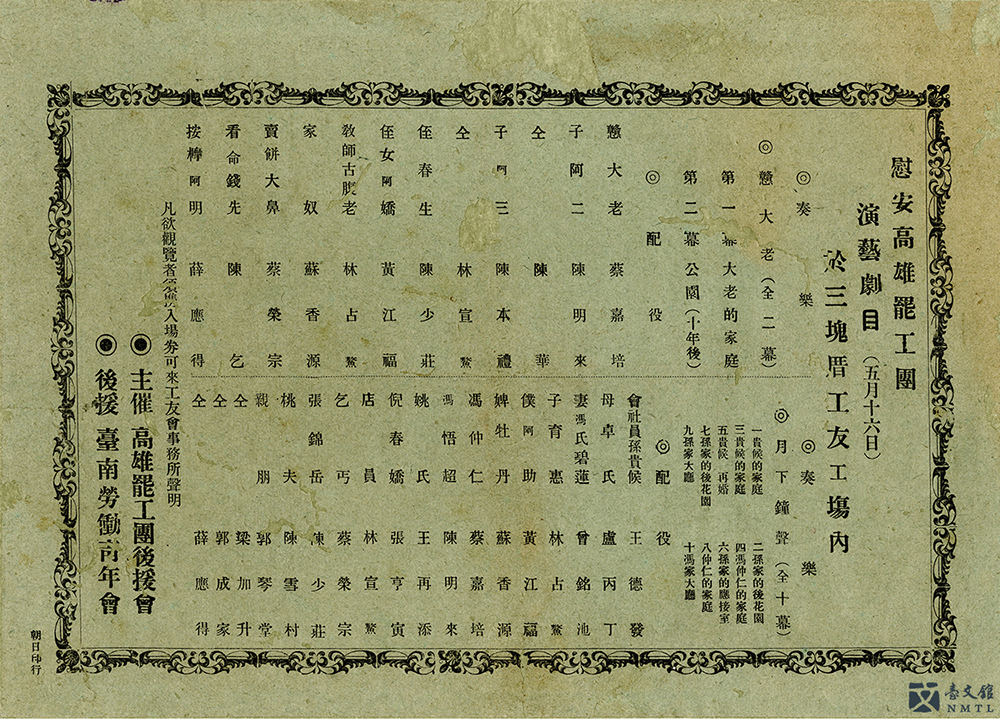
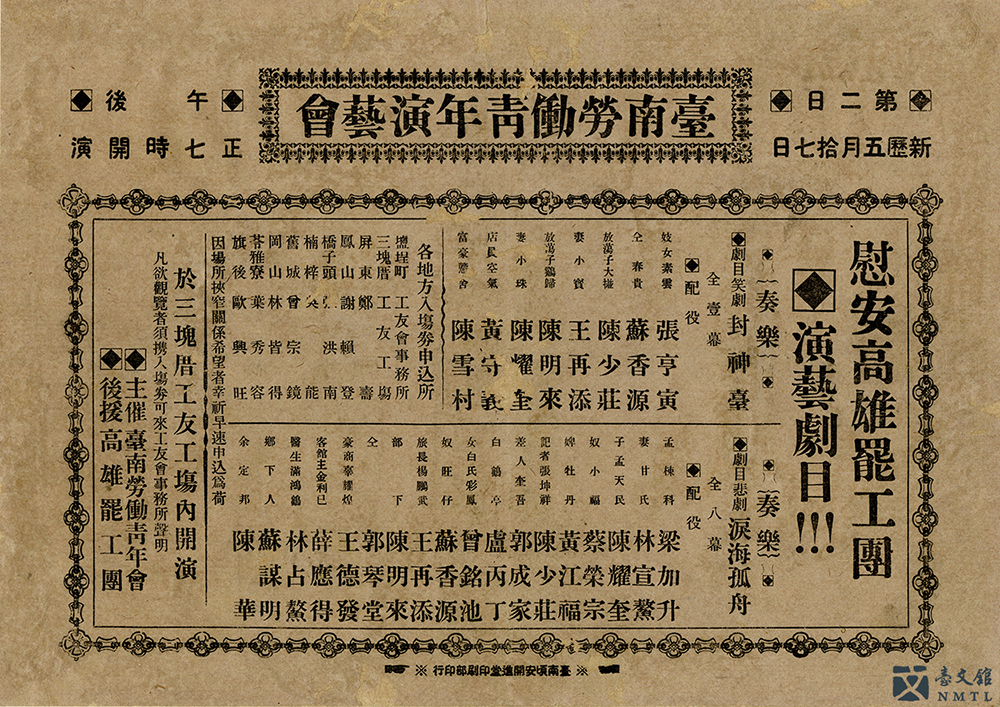
ღ Tainan Cultural Theatre Supporting Strike by Asano Cement Workers & Flyer Promoting the Repertoire for Asano Cement Workers| In 1928, Wu Shi-ding, a worker of Asano Cement, was taken into custody by Tainan court for an assault incident. Later on, he was acquitted. Yet, his company fired him for his absence from work. Chair of the union first tried to negotiate with the company but to no avail. On April 13th, more than 40 workers showed up to fight for Wu's reinstatement. Yet, these workers were fired. On the next day, 350 workers initiated a strike, marking the beginning of the Asano Cement Strike. The strike lasted more than one month. From 16th to 17th of May, Tainan Cultural Theatre and Tainan Young Workers Association, with the sponsorship of Han Shi-quan (member of Taiwan Cultural Association), travelled to Sankuaicuo Factory in Southern Taiwan to encourage the strikers with theatrical performances.(Provided by Zhuang Ming-zheng)

ღ Bookmark Given to Zhuang Song-lin by Lu Bing-ding| In November 1929, Lu Bing-ding gave a bookmark printed with his own portrait to Zhuang Song-lin during his trip in Gulangyu, Xiamen. Zhuang studied at Jimei School in Xiamen in 1926. After returning to Taiwan, he actively took part in the left-wing cultural movement. It is speculated that he met Lu during the movement.(Provided by Zhuang Ming-zheng)
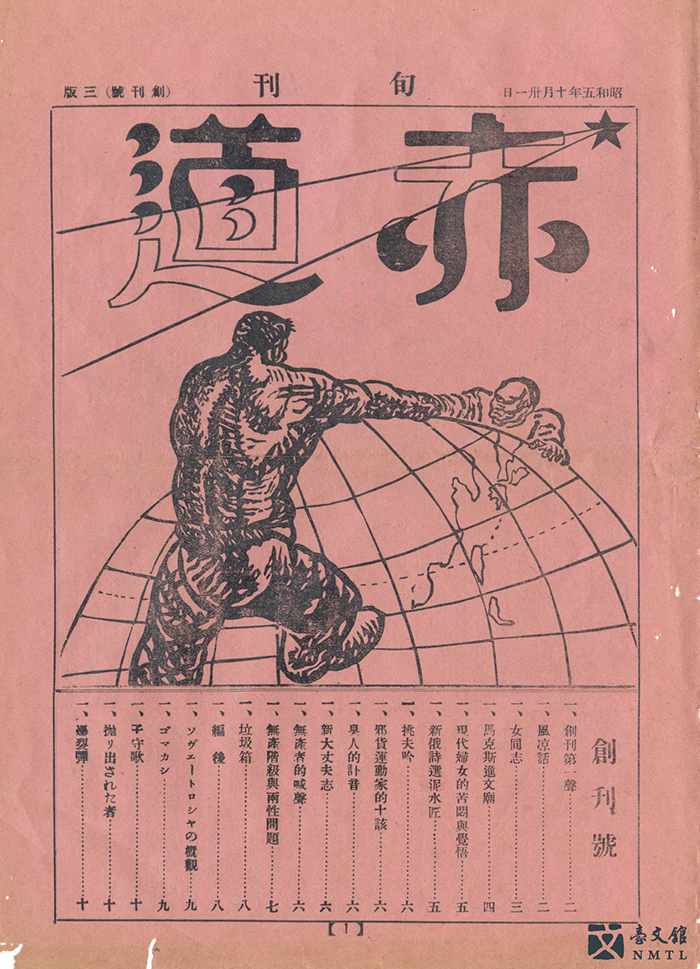
ღ First Issue of EQUATOR| EQUATOR was founded on October 31st, 1930. It was a left-wing quarterly magazine published by Tainan Equator Newspaper. Lin Qiu-wu was the editor and publisher. There were also Lin Zhan-ao, Lin Xuan-ao, Zhuang Song-lin, Lu Bing-ding, Chen Tian-shun, and Zhao Lima. "Introduction to 1st Issue" describes the motivation behind its establishment: "The magazine aims at bringing light to the bleak and troubled society in a revolutionary way and pointing out the right path…"(Collection of Archives of Institute of Taiwan History, Academia Sinica)
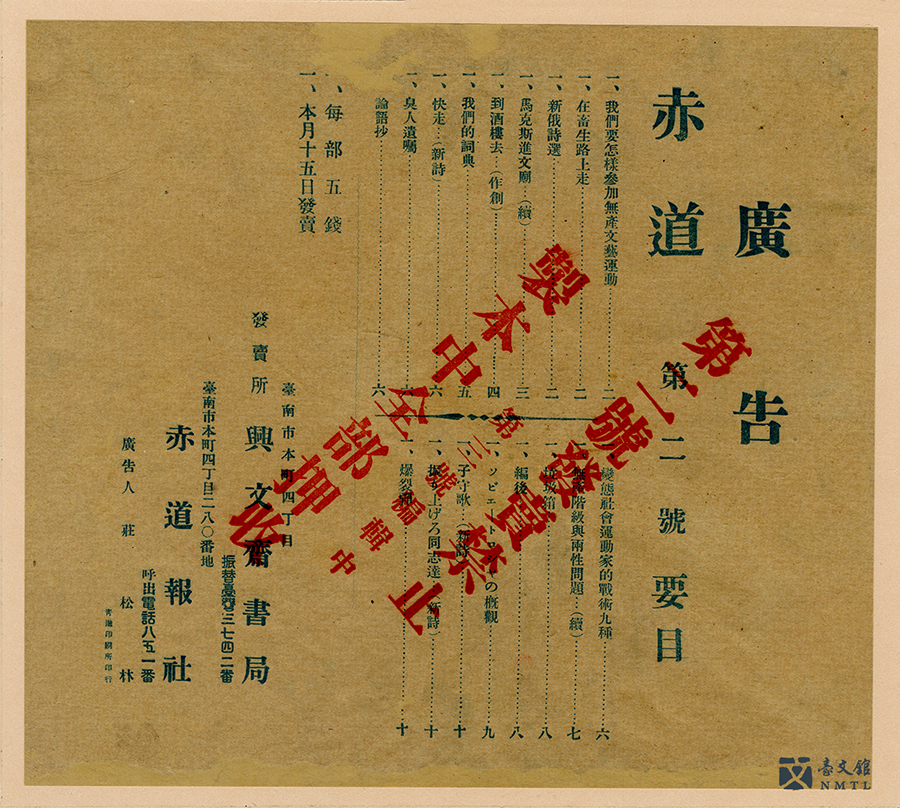
ღ Prohibition on Sales of EQUATOR No.2| There was a ban on sales of EQUATOR No.2. Though it was banned, some part of it was leaked and preserved. It included articles such as: "How Do We Participate in The Cultural Movement of The Proletariat," "Walking On The Road of Beasts," "New Collection of Russian Poems," "Marx in the Temple of Confucius," "Let's Go to The Public House," "Our Dictionary," "Hurry Up And Go," "Will of a Stinky Man," "The Analects," "Nine Strategies of a Psychopathic Social Activist," "The Proletariat and Gender Issues," "Garbage Bin," "Editor's Notes," "Introduction to the Soviet Union," "Lullaby" (new poetry), "Cheer Up, My Comrades" (new poetry), and "Explosive Bomb."(Provided by Zhuang Ming-zheng)
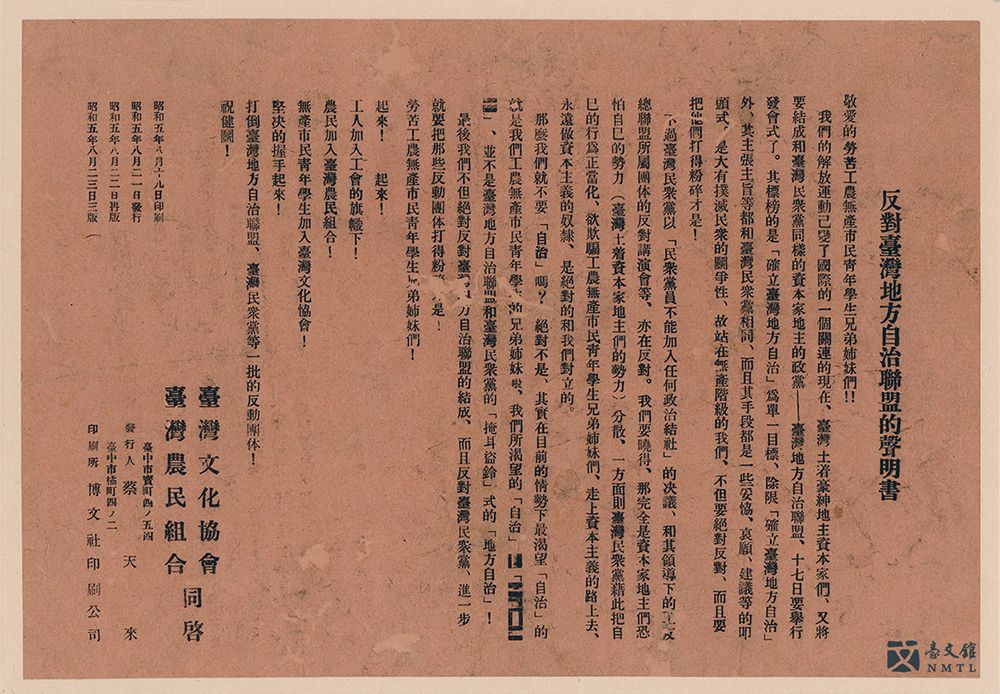
ღ Statement on Opposition to Taiwan Union of Local Autonomy| In July 1930, the Taiwan Union of Local Autonomy put forward a proposal for its establishment. It expected to hold an inaugural meeting on August 17th. After this news spread, the Taiwan Cultural Association and Taiwan Farmers Coalition immediately made a statement—"Opposition to Taiwan Union of Local Autonomy," asking workers, farmers, and proletarian young people to come forward and fight against the foundation of Taiwan Union of Local Autonomy and Taiwan People's Party.(Provided by Zhuang Ming-zheng)
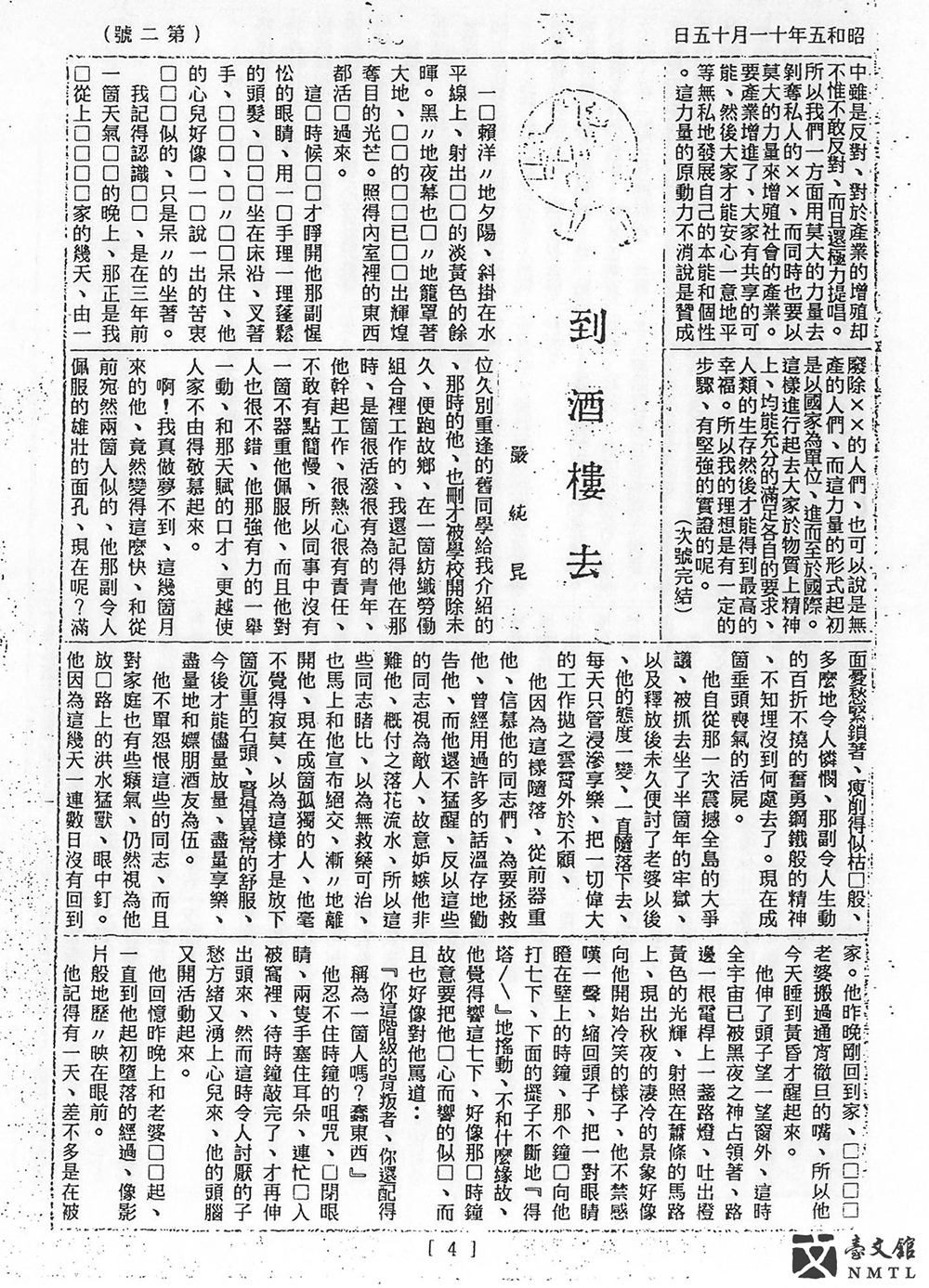
ღ Yan Chun-kun's "Let's Go to The Public House," EQUATOR No.2| "Let's Go to The Public House" tells the tale of a demoralized social activist. He one day receives a phone invitation from a woman working at the public house. Just when he is about to attend the appointment, he sees the workers' association distributing flyers for an emergency meeting. He hesitates, but still concludes that he is better off going to the public house. The short essay uses an ironic tone while pointing out the inner conflict in social activists between fighting for their ideals and enjoying life as much as possible in the face of strong pressure from the government.(Collection of the National Museum of Taiwan Literature)
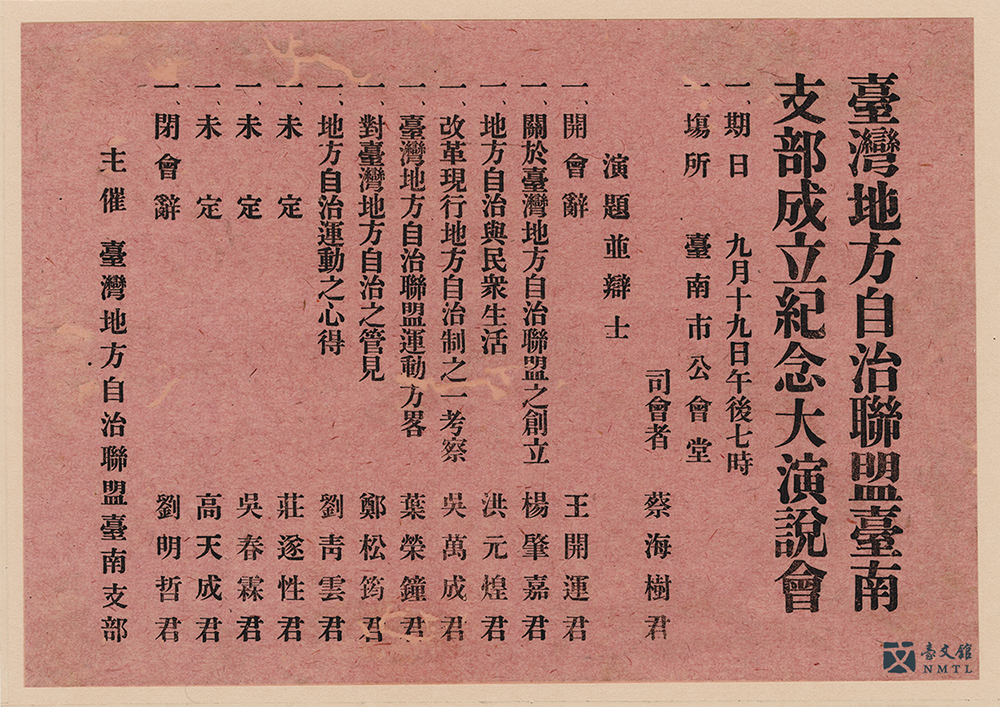
ღ Taiwan Union of Local Autonomy Tainan Branch Inaugural Ceremony Speech| In 1930, the Taiwan People's Party was faced with internal conflict due to different attitudes toward the guidelines for initiating movements. Tsai Pei-huo, Cai Shi-gu, and Yang Zhao-jia thought that it was important to carry out firm and steady movements for local institutional reform. On August 17th, 1930, Lin Hsien-tang acted as the initiator and held an inaugural ceremony for the Taiwan Union of Local Autonomy at Miyahara Restaurant in Taichung. On September 19th of the same year, the Tainan branch was established.(Provided by Zhuang Ming-zheng)

